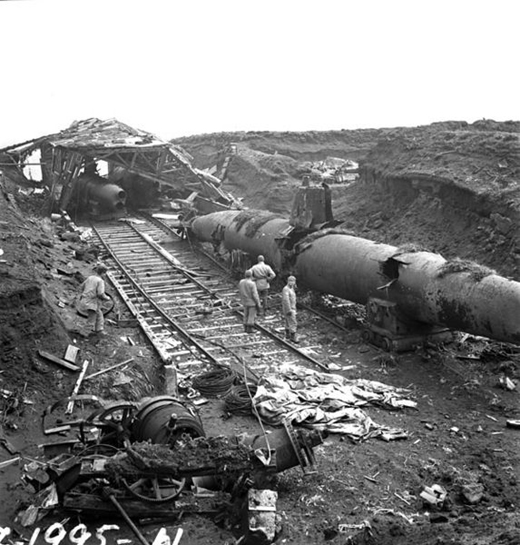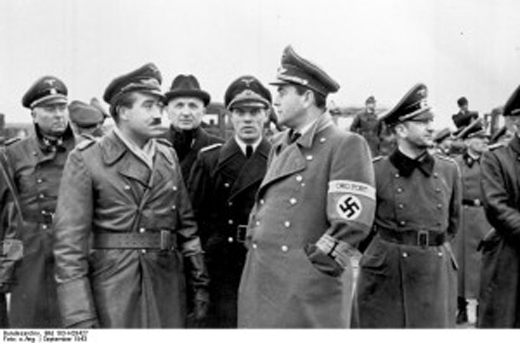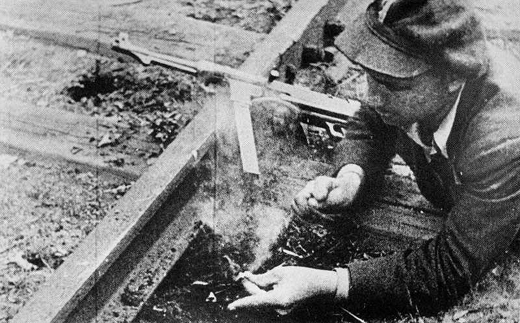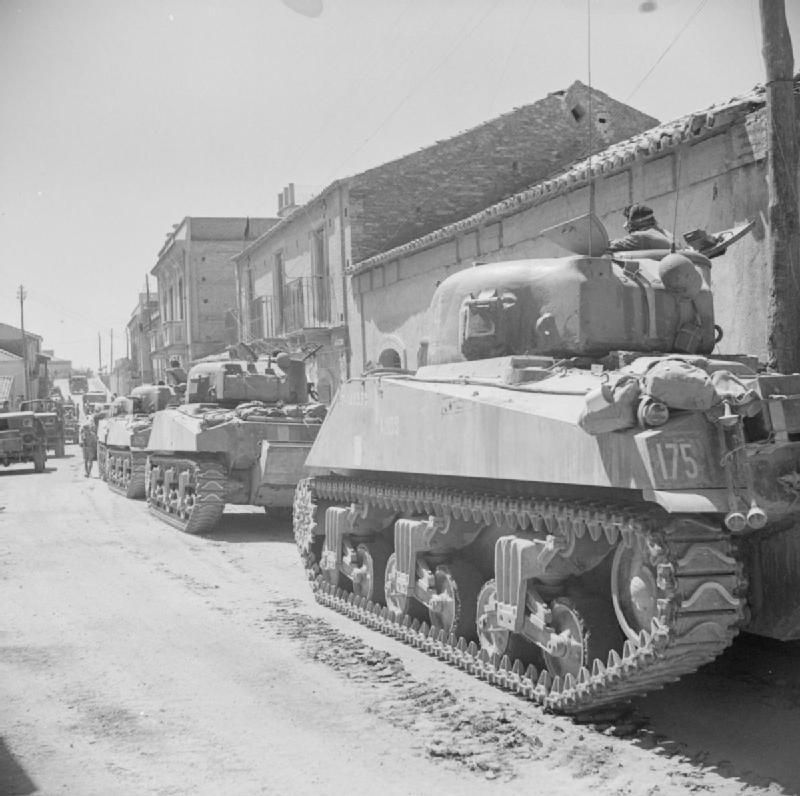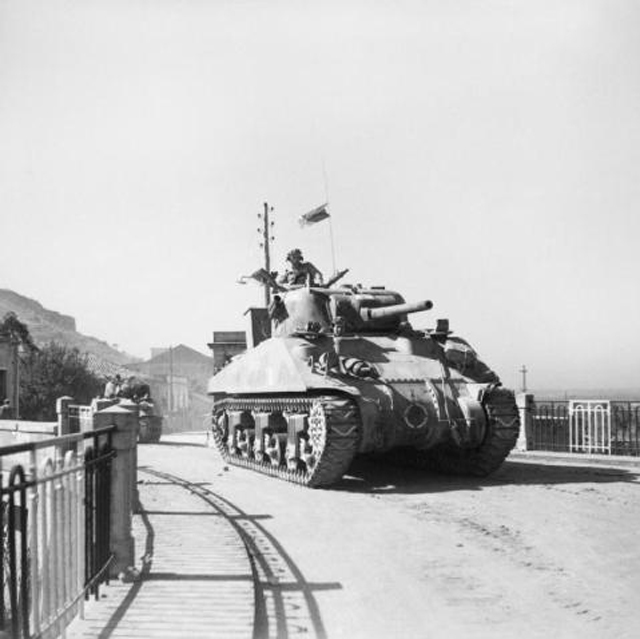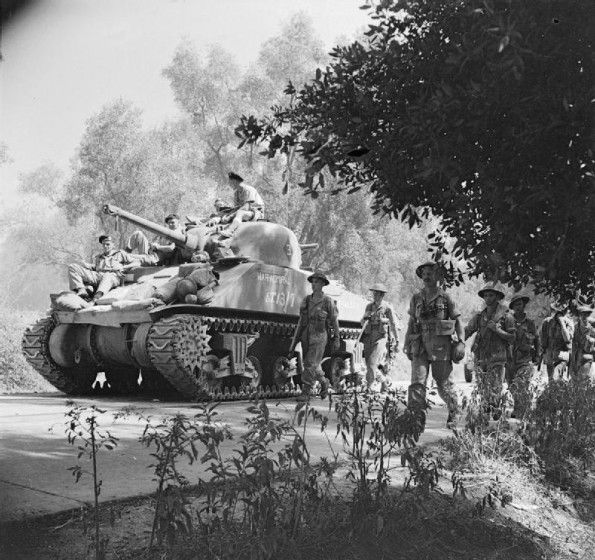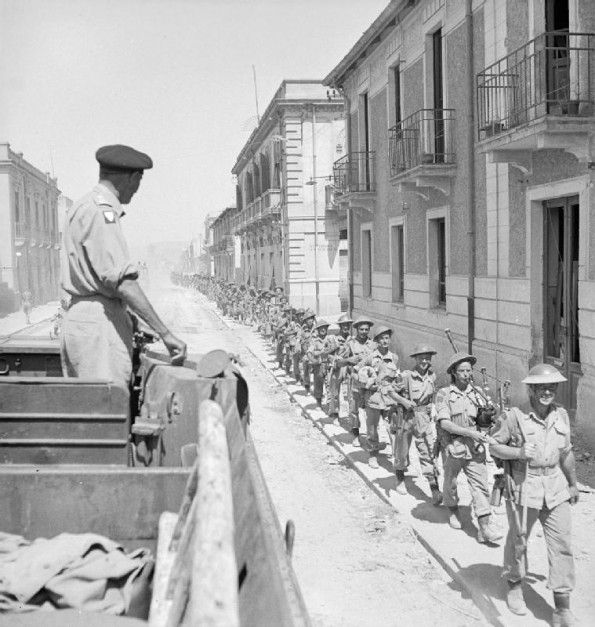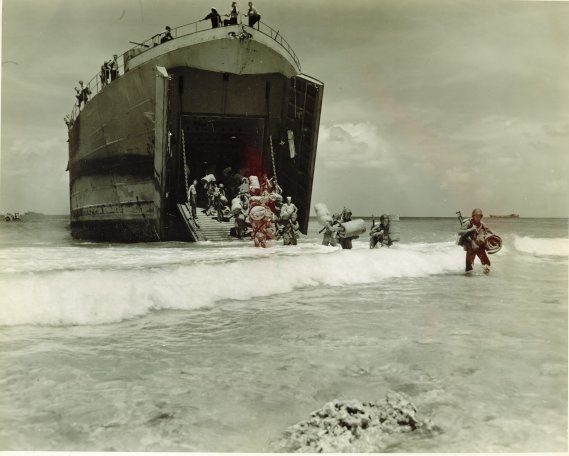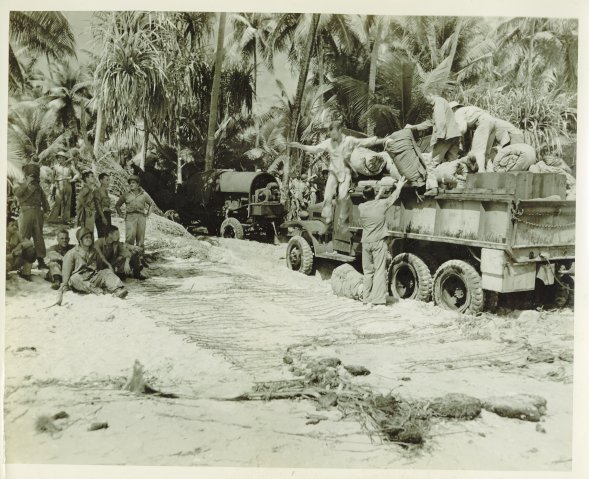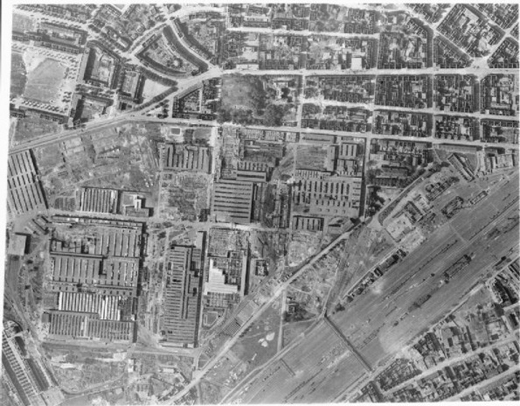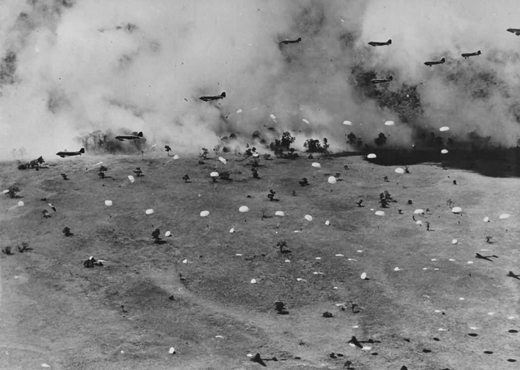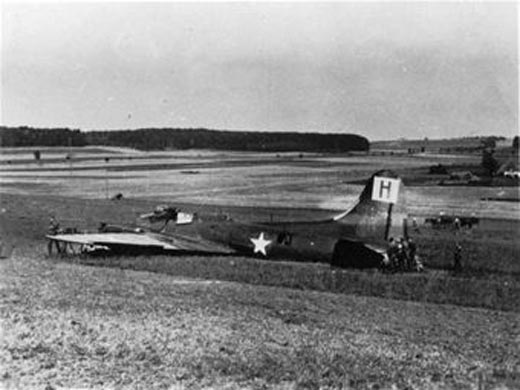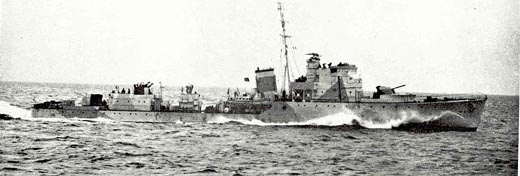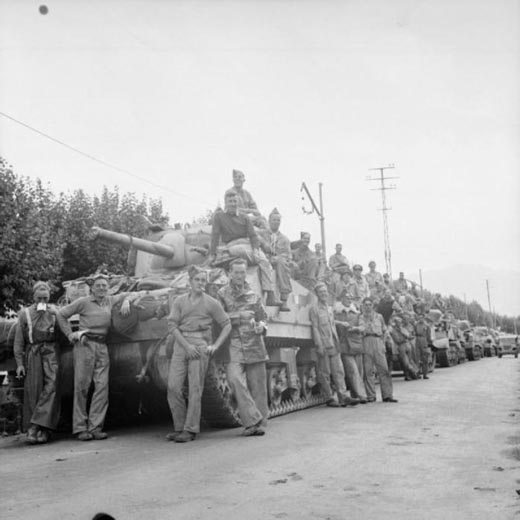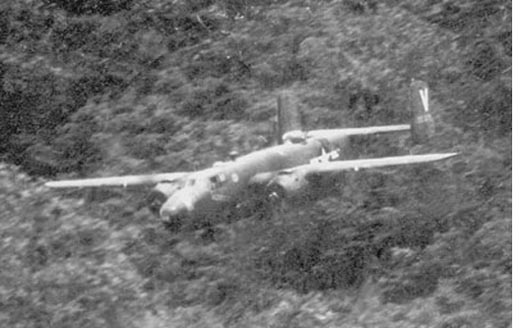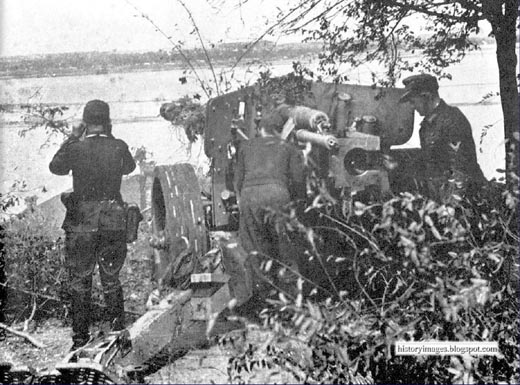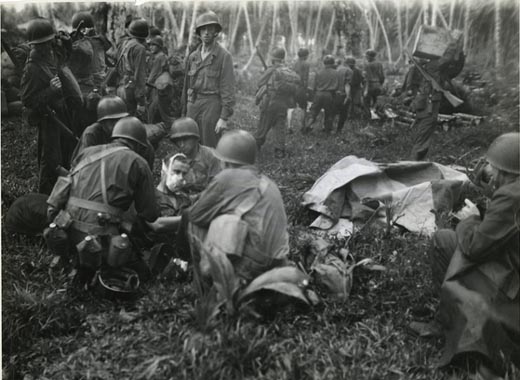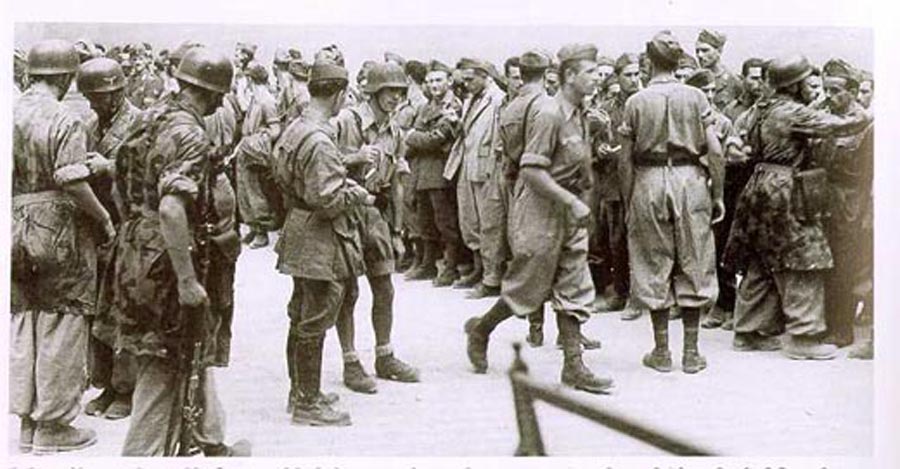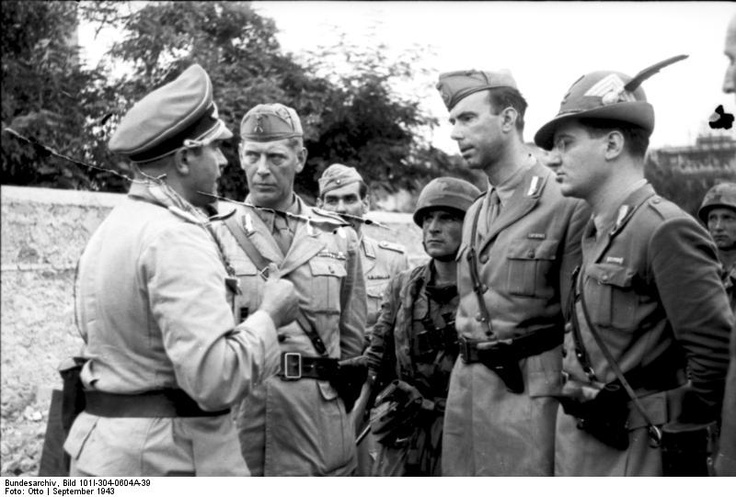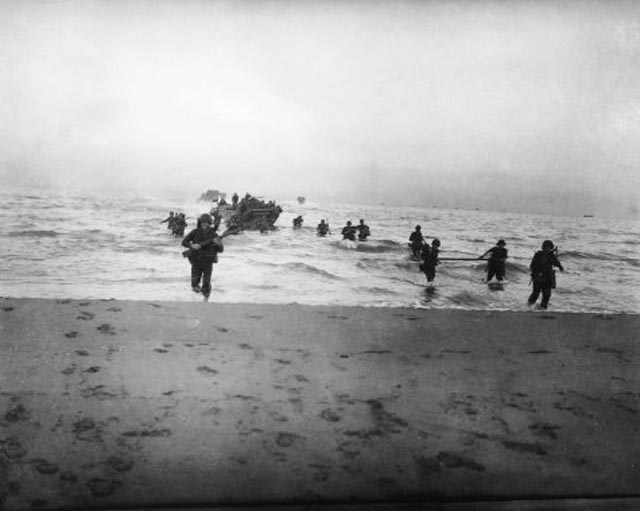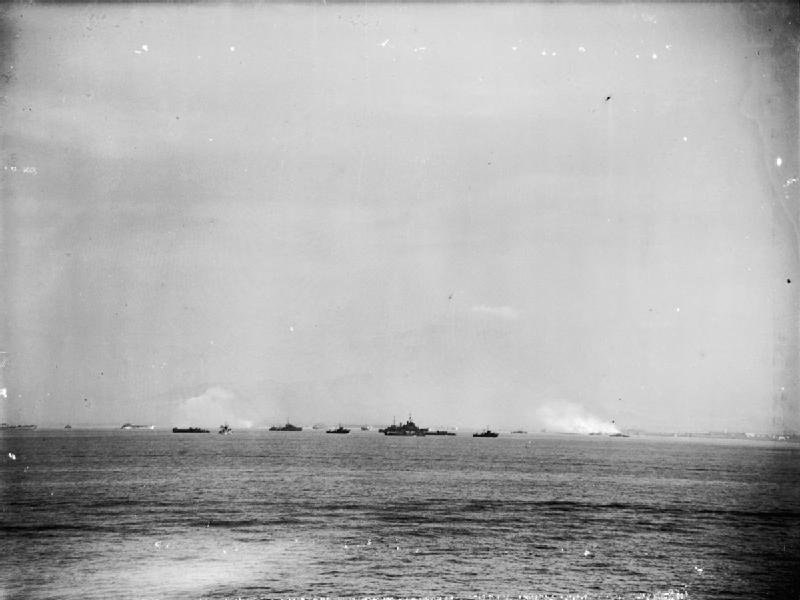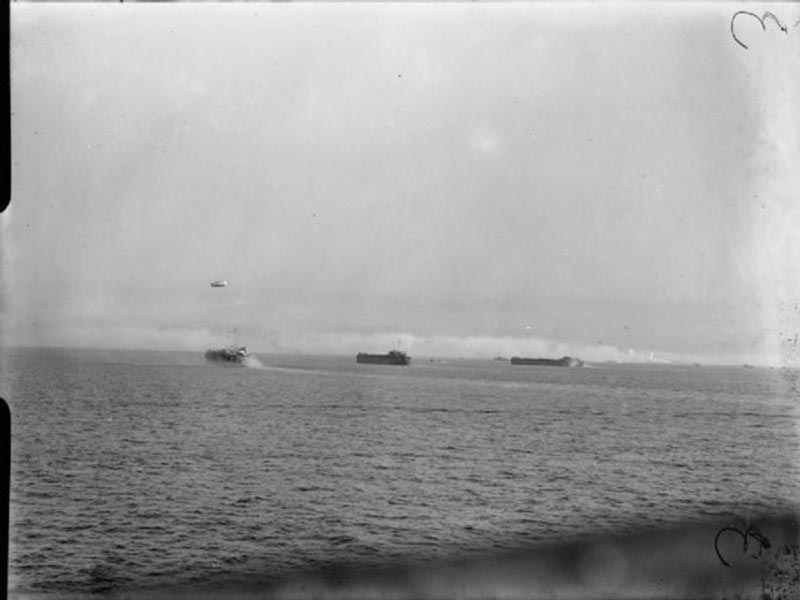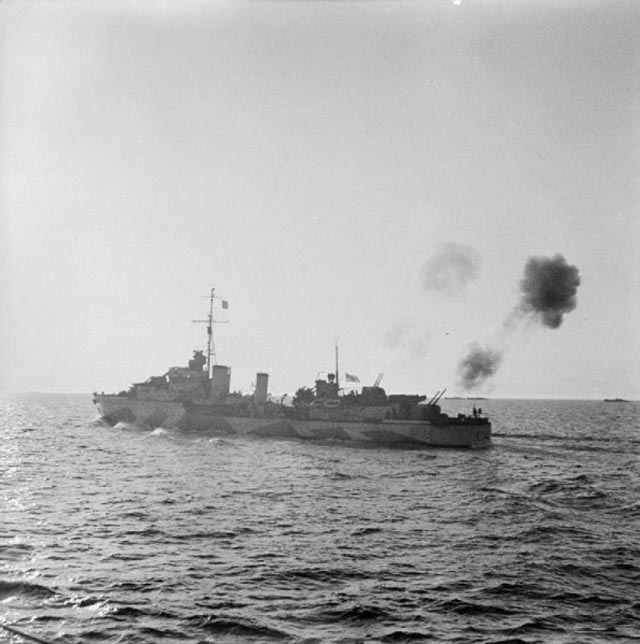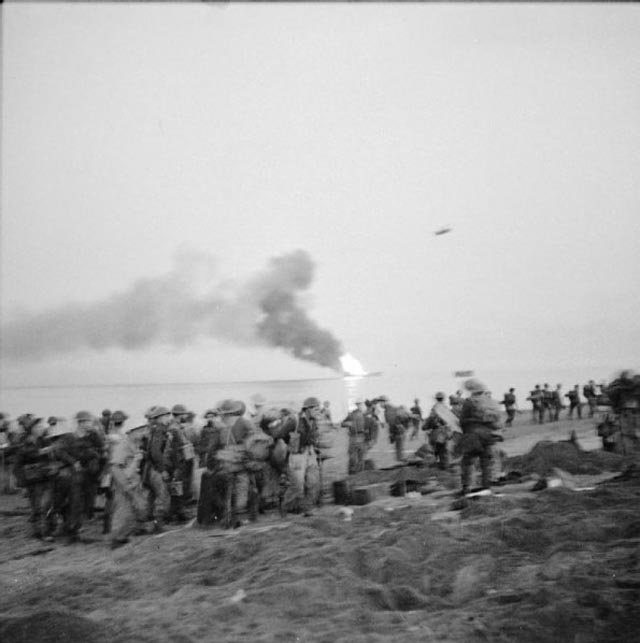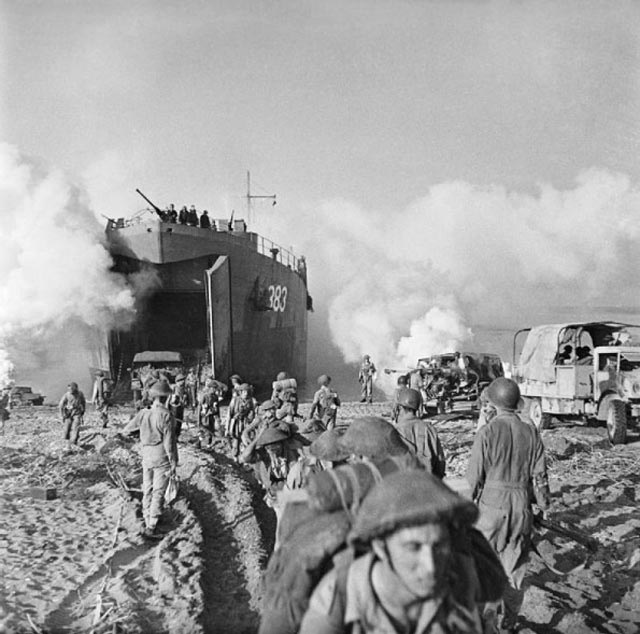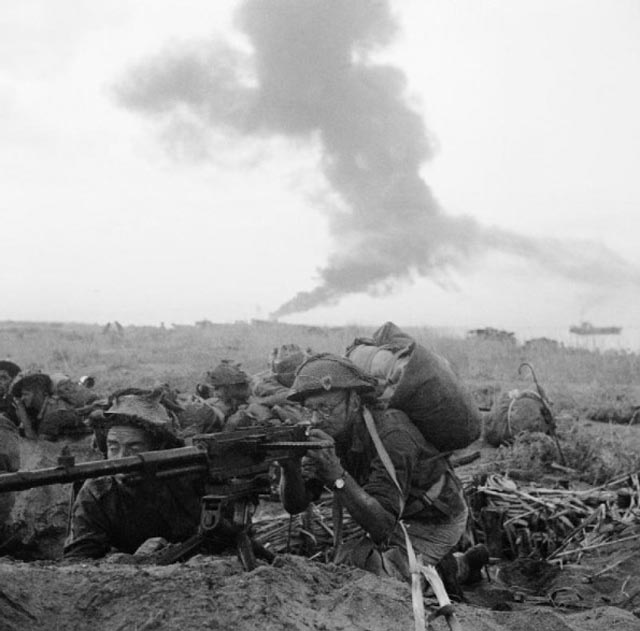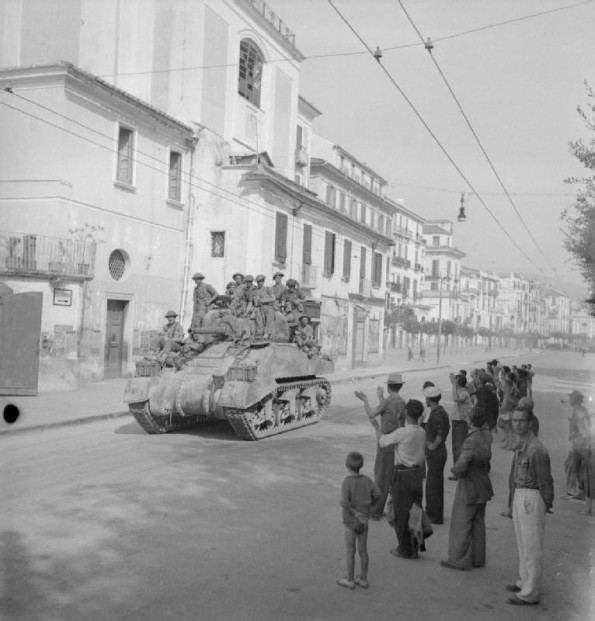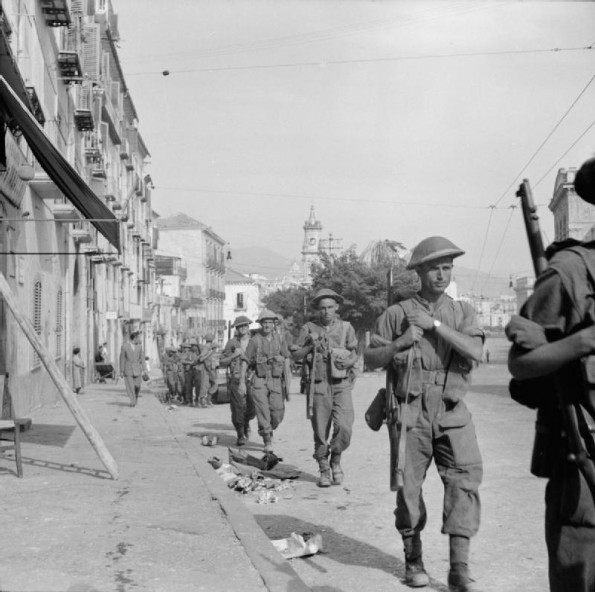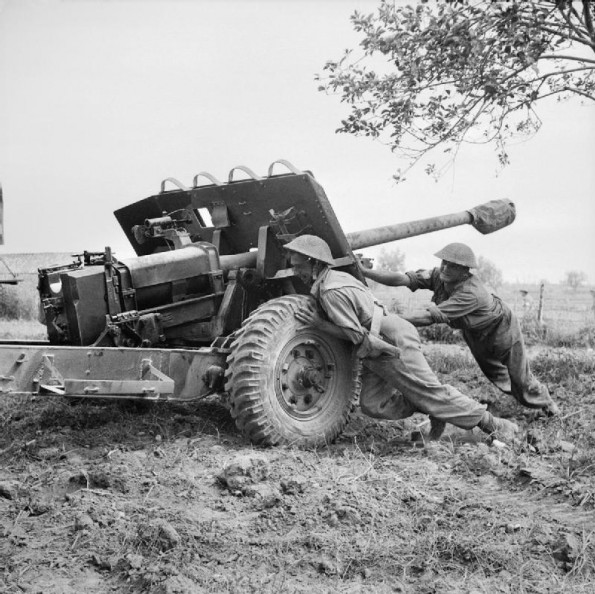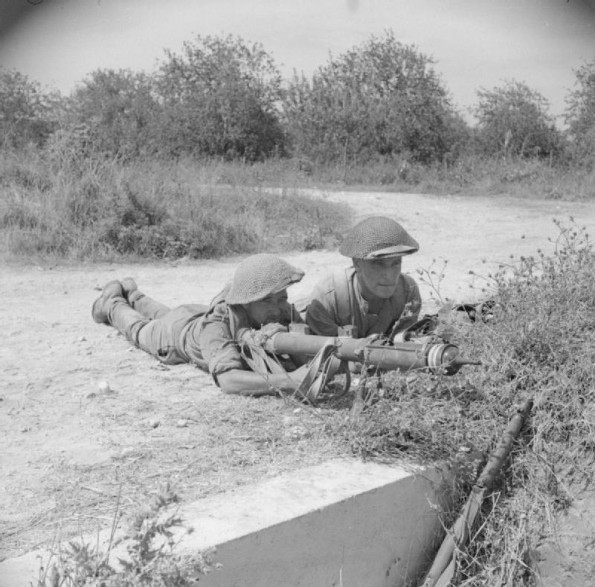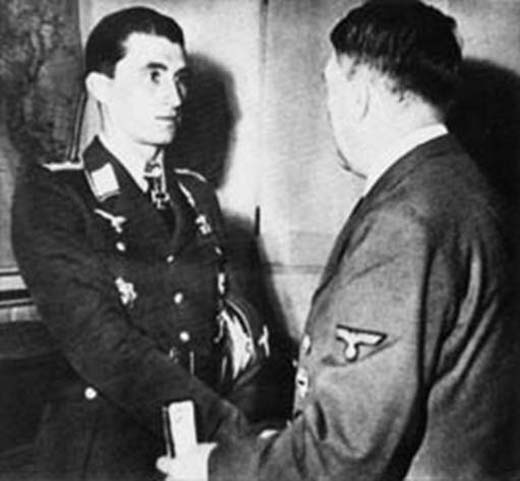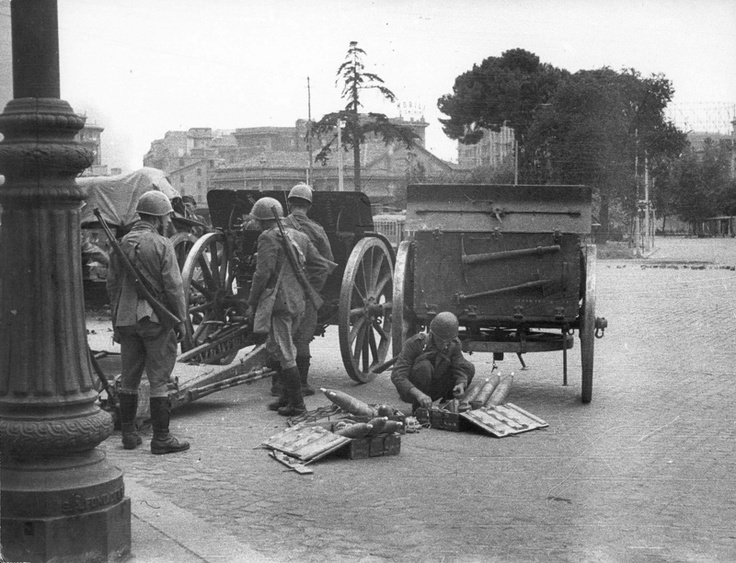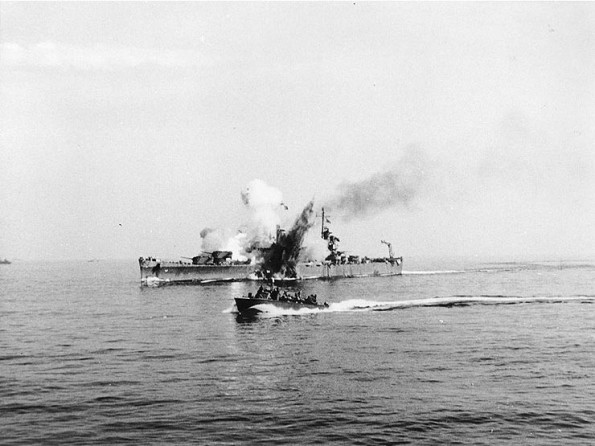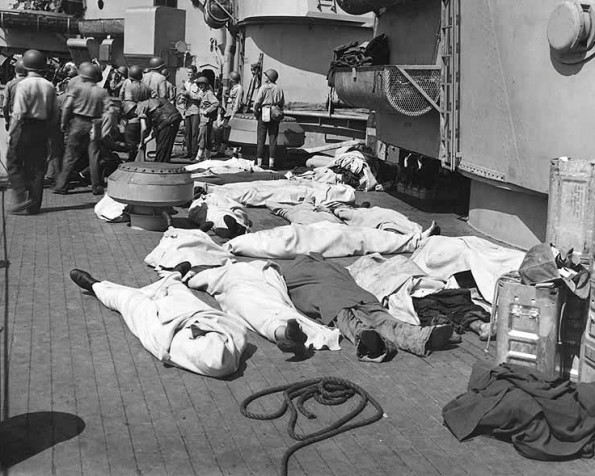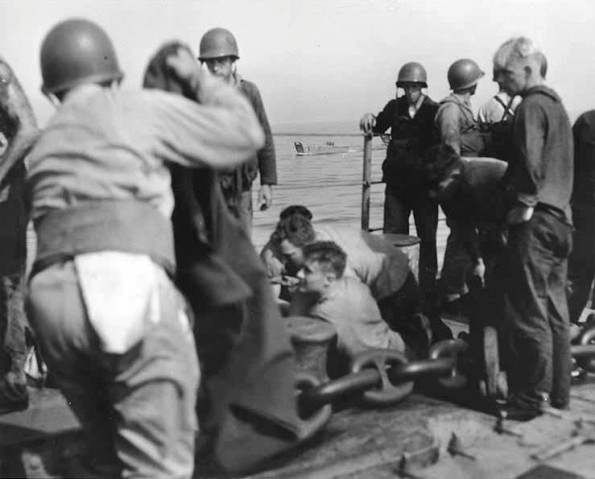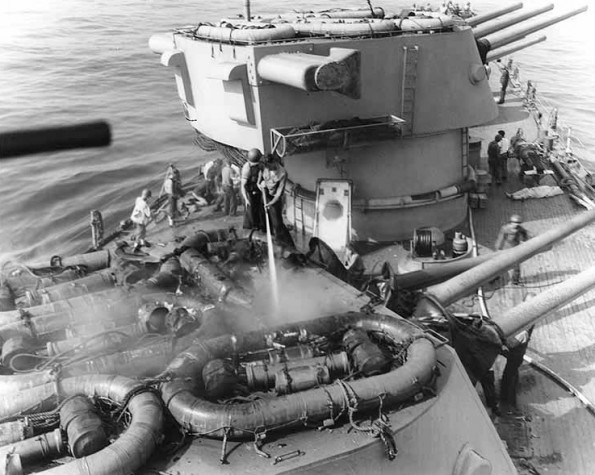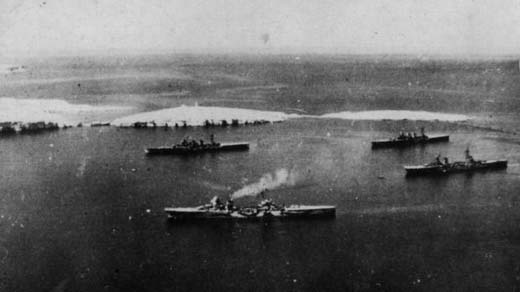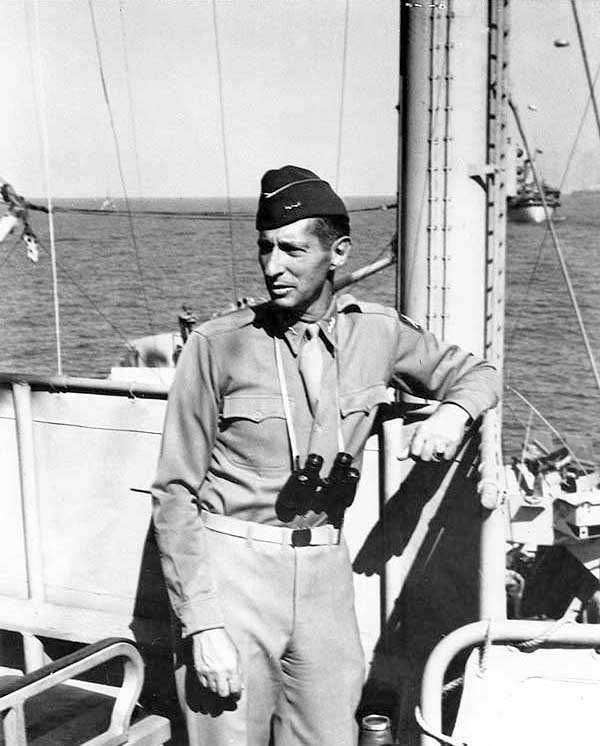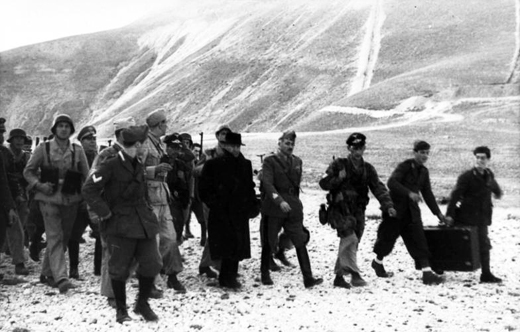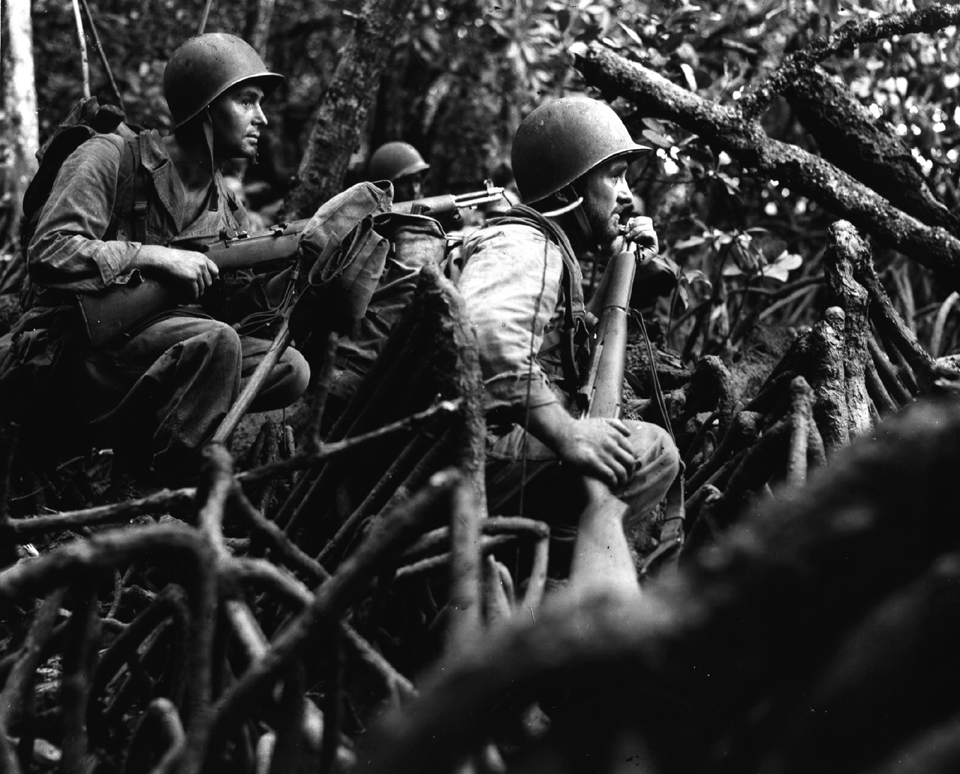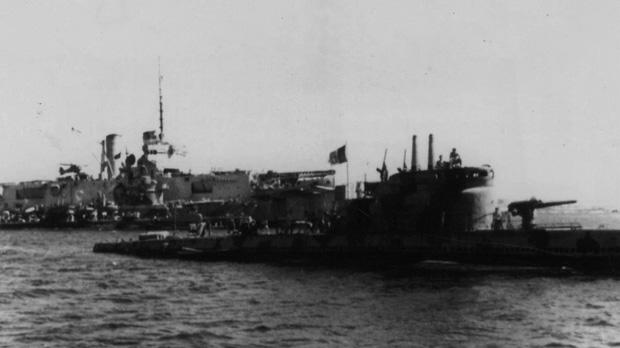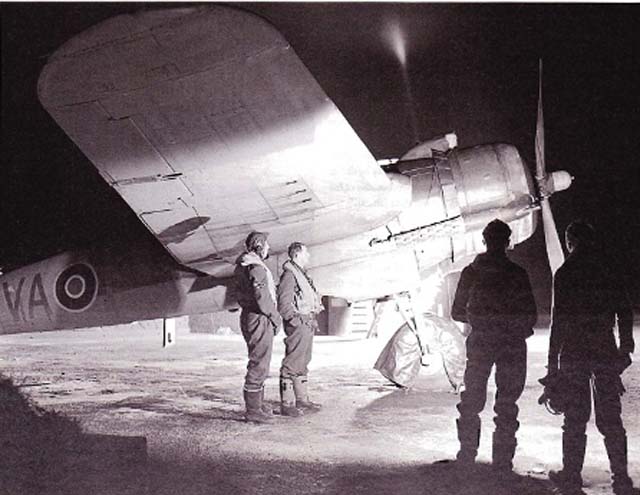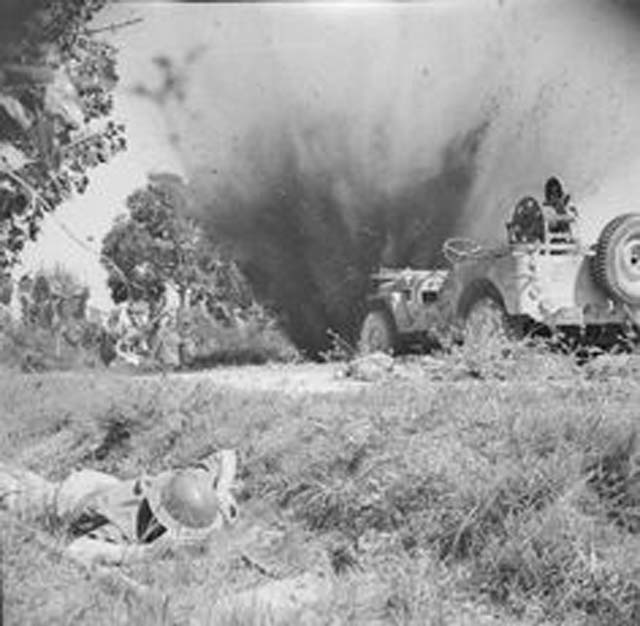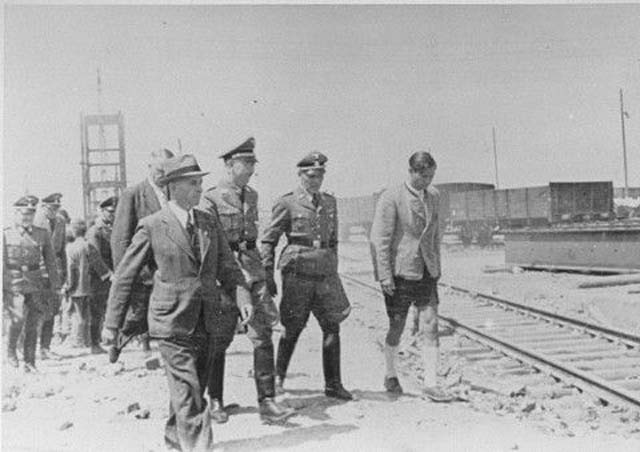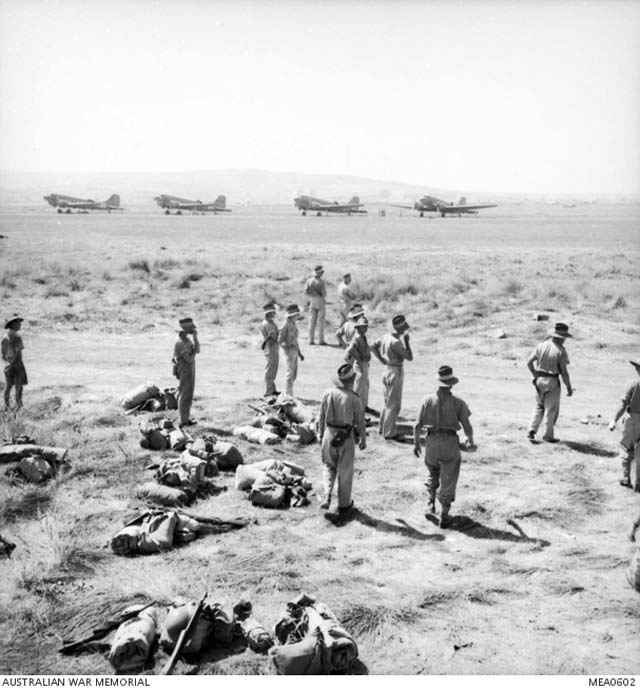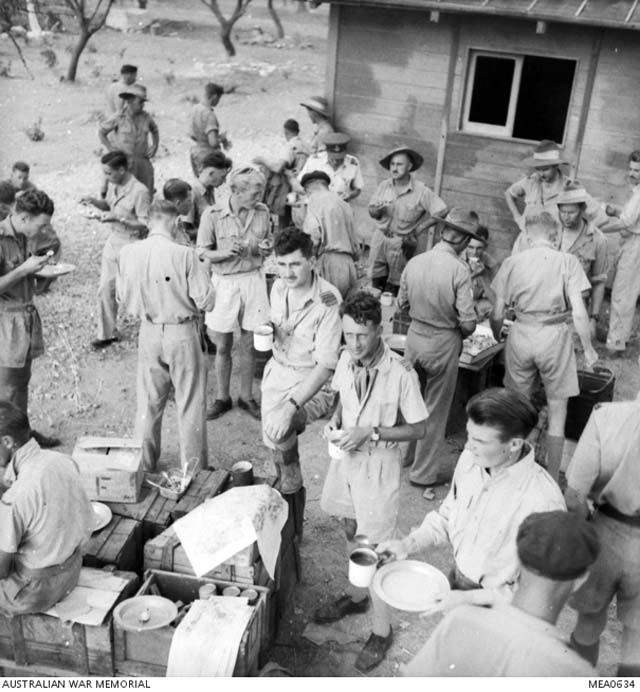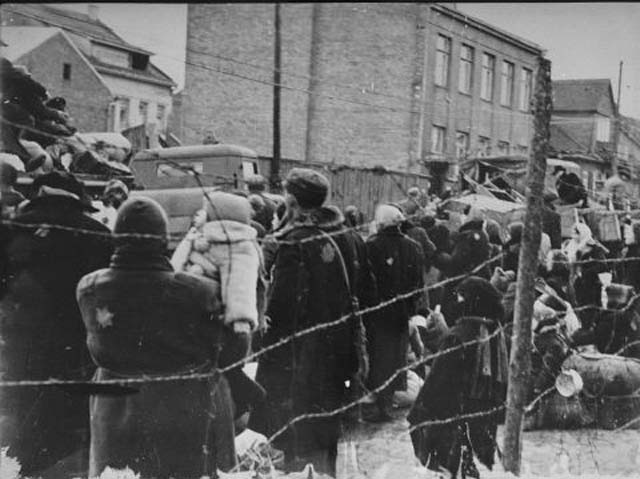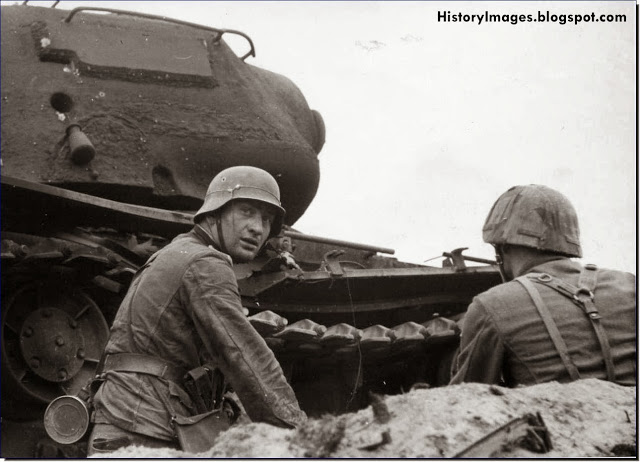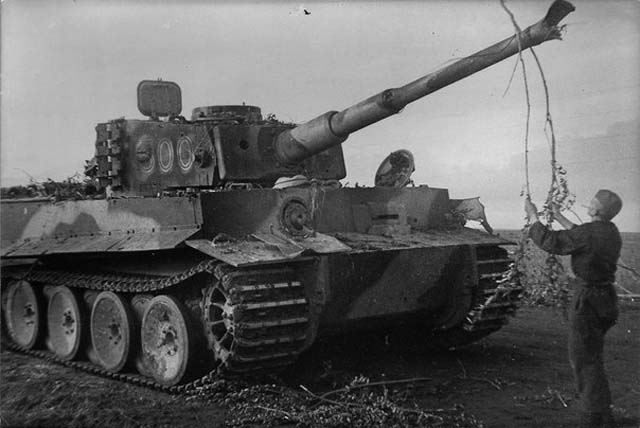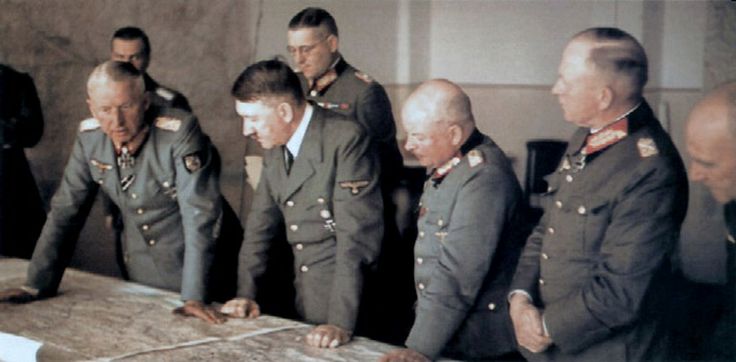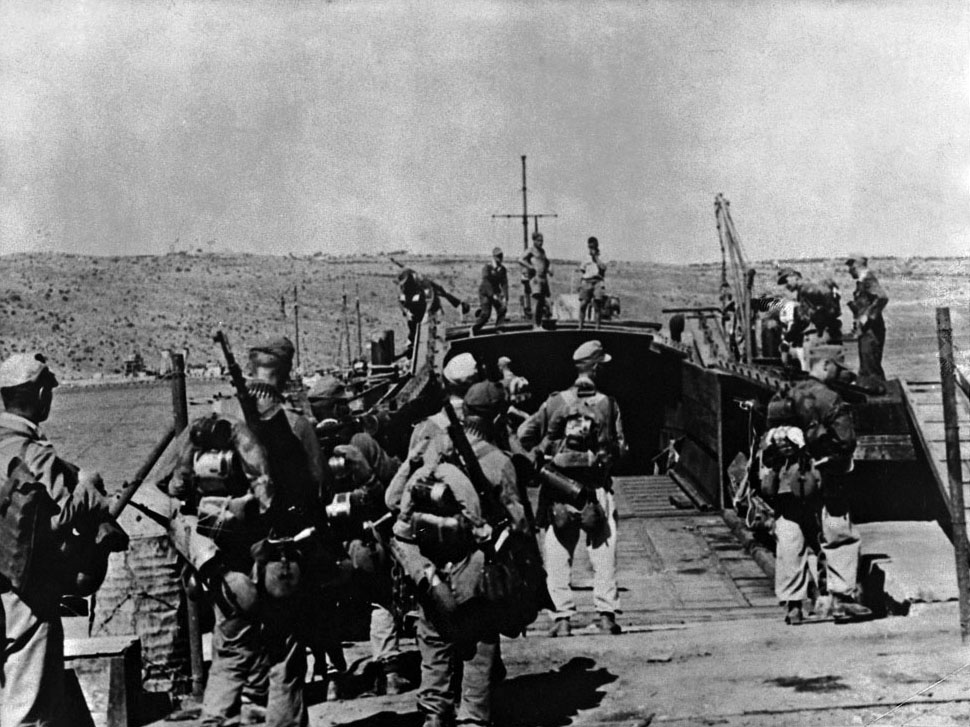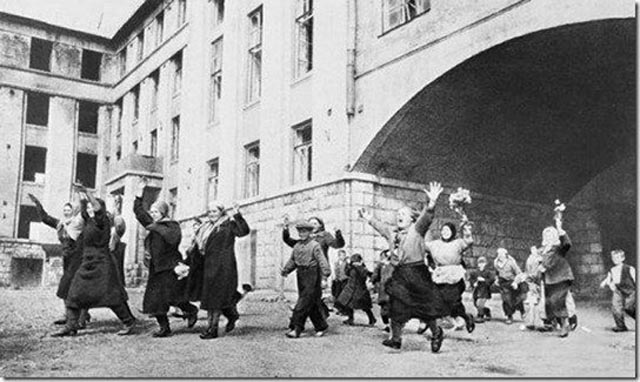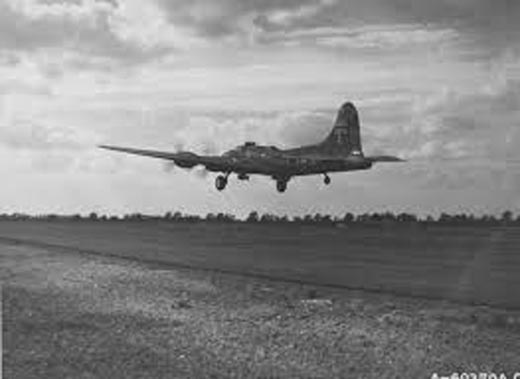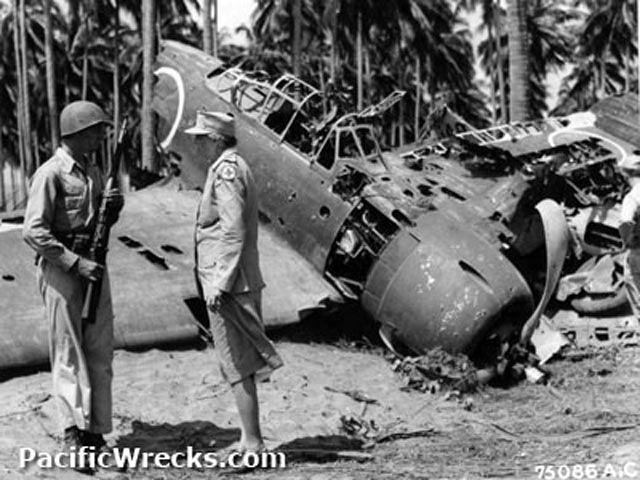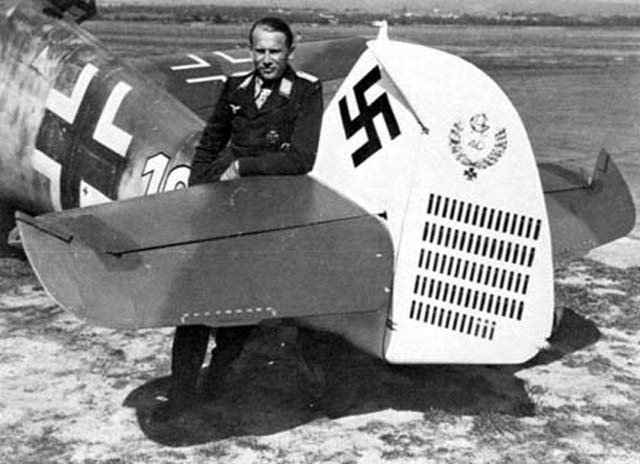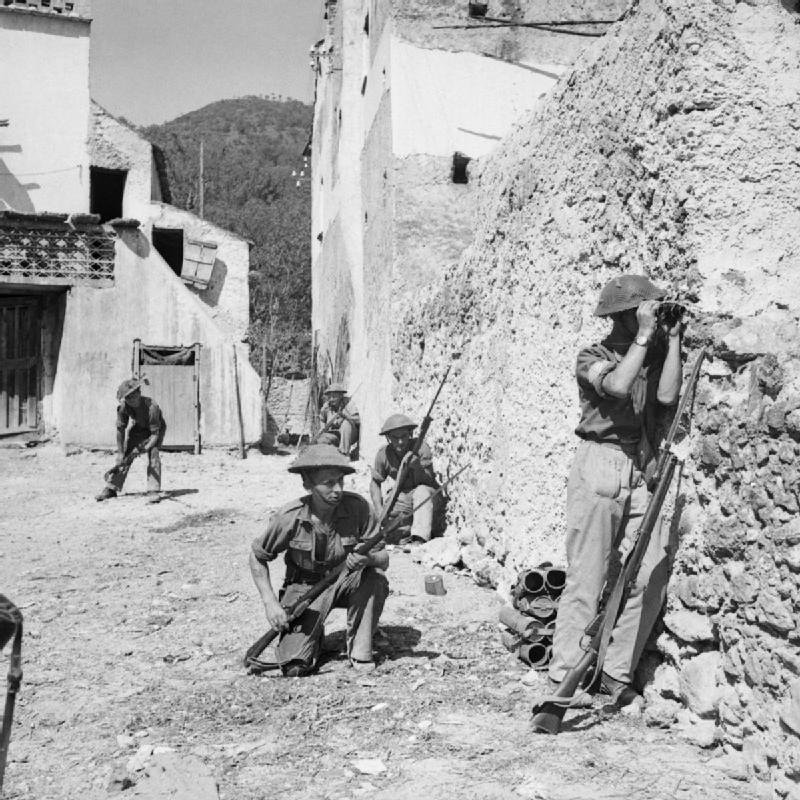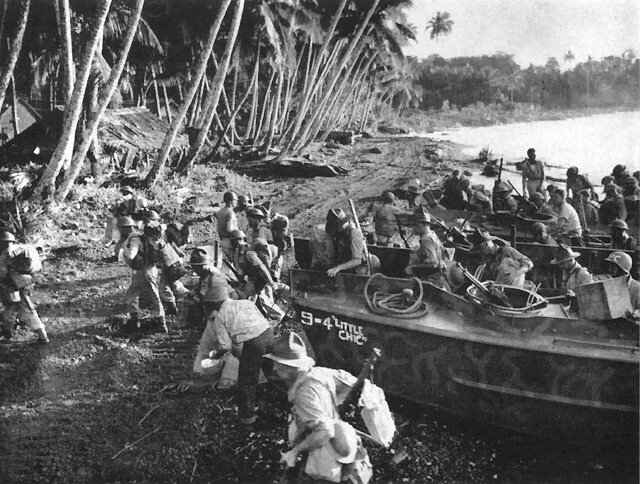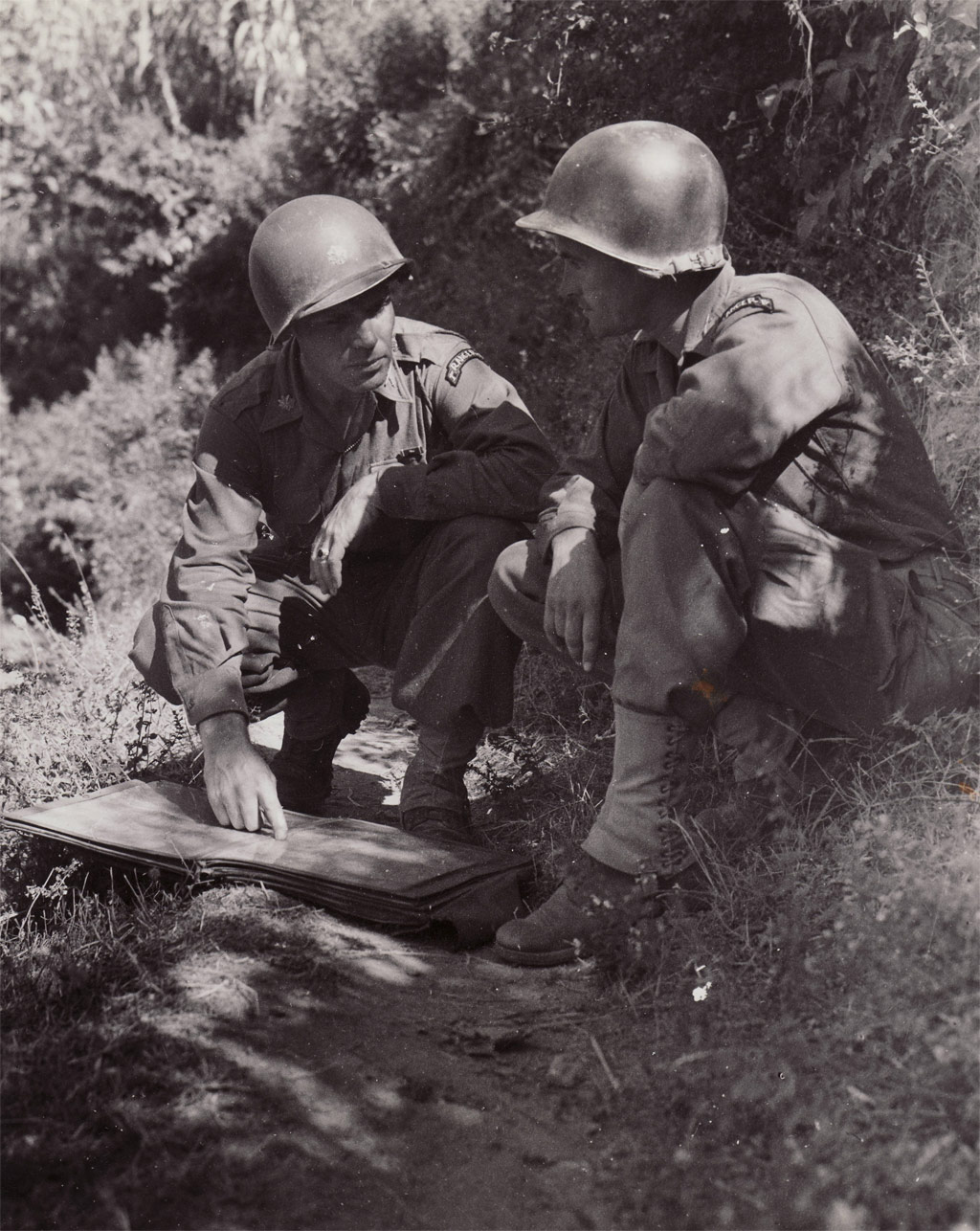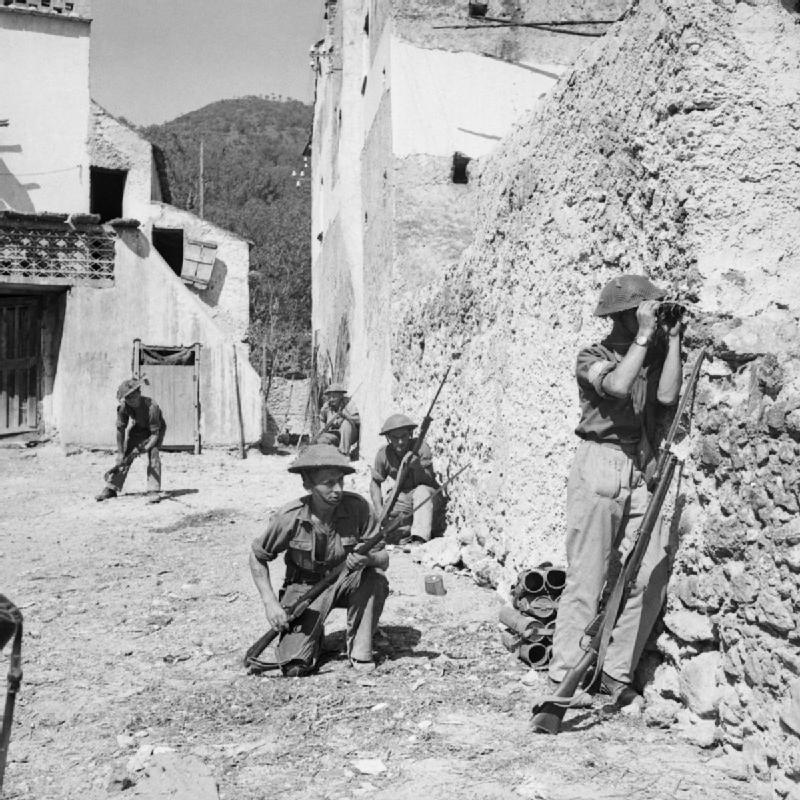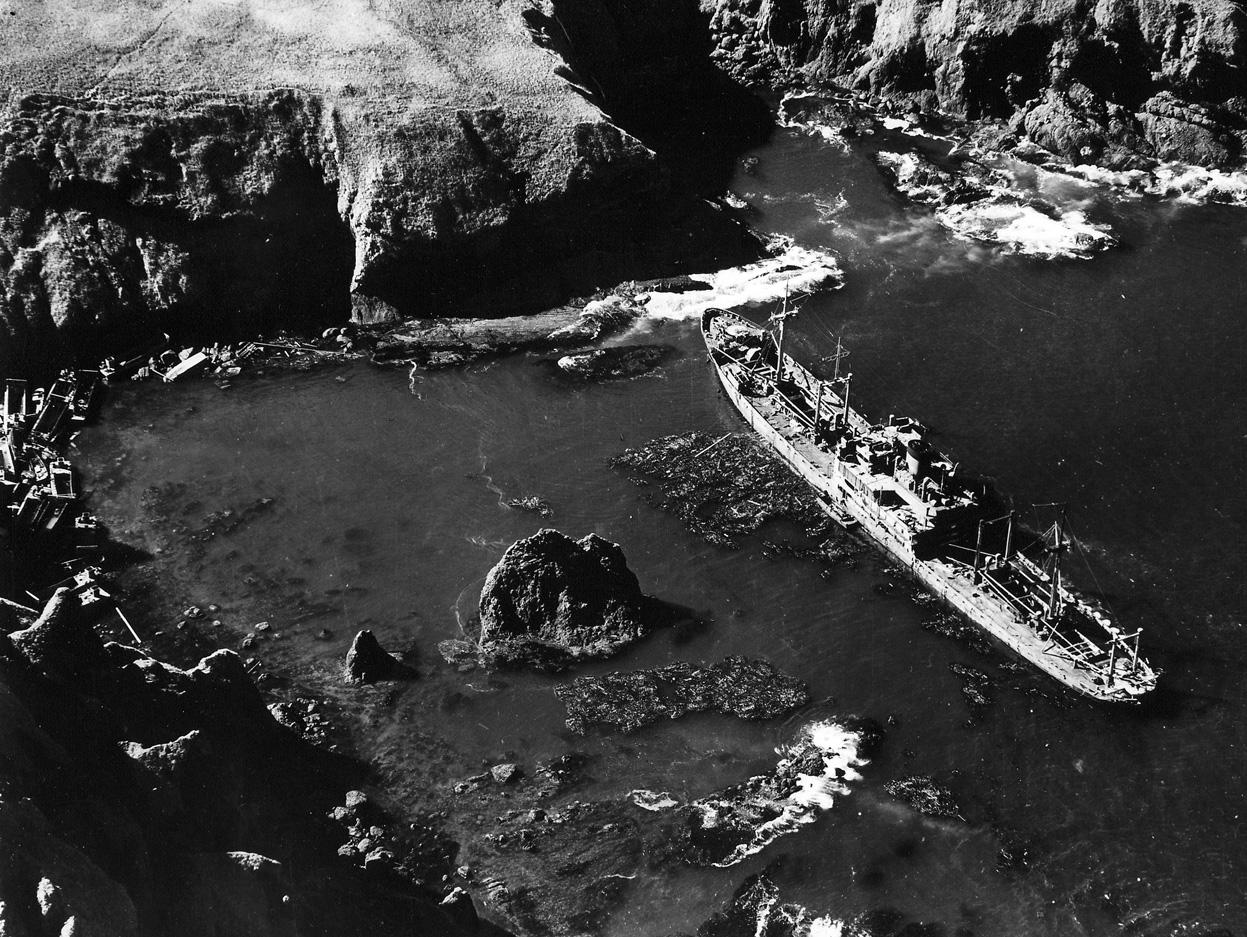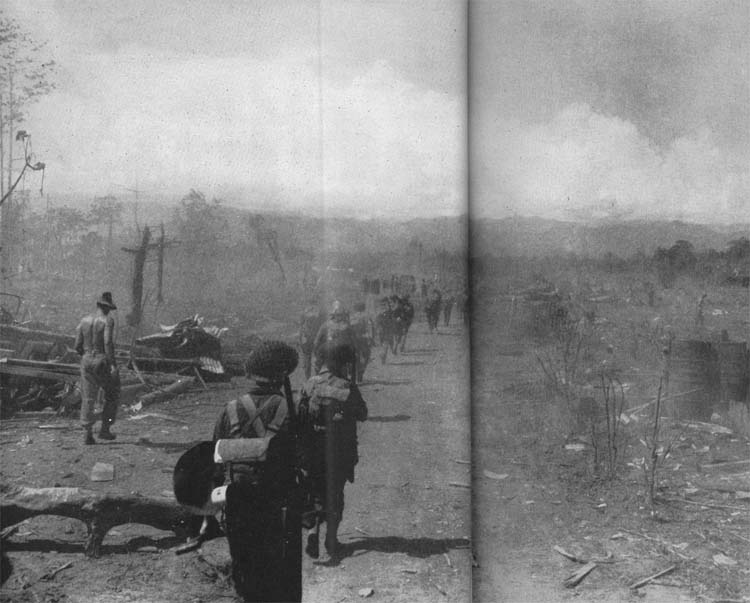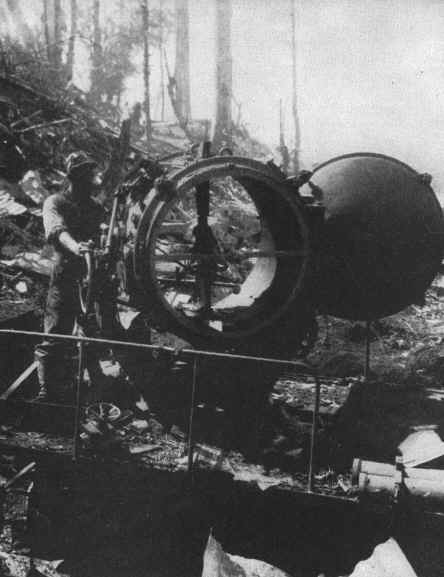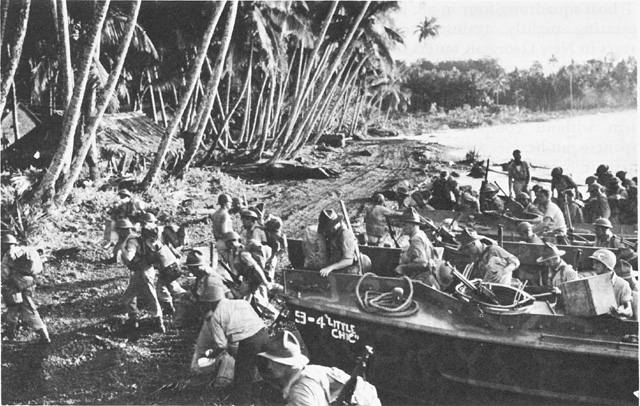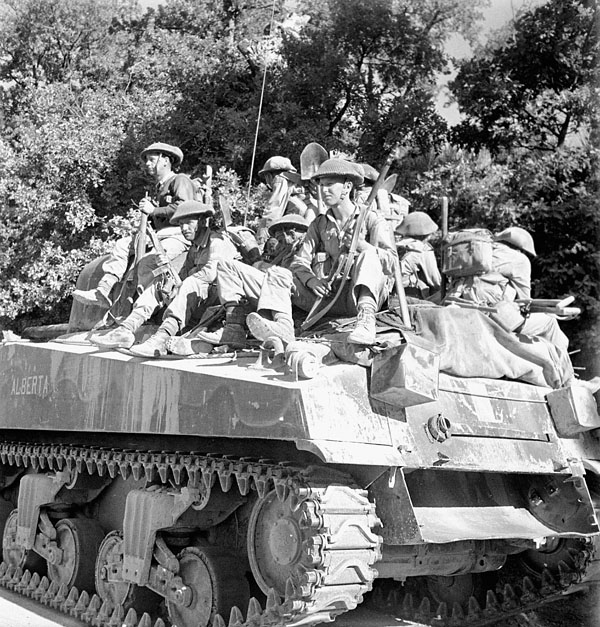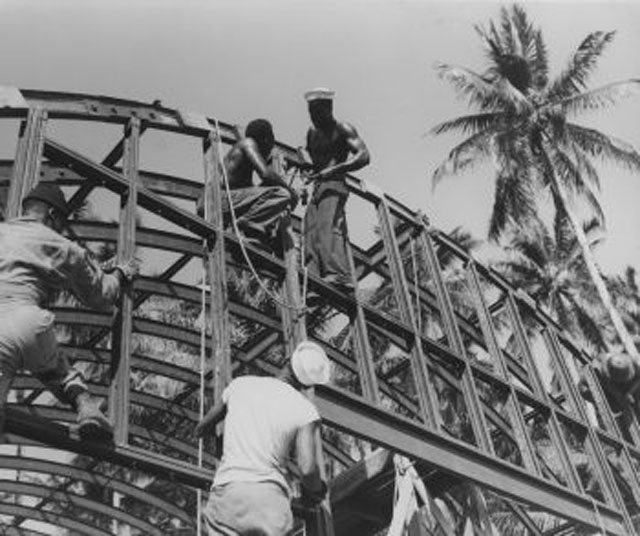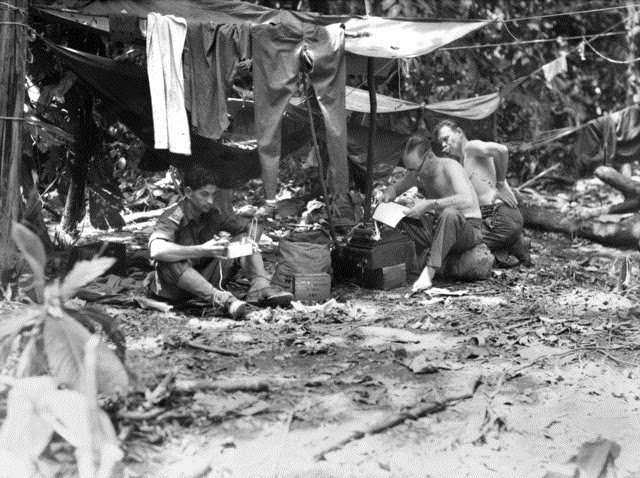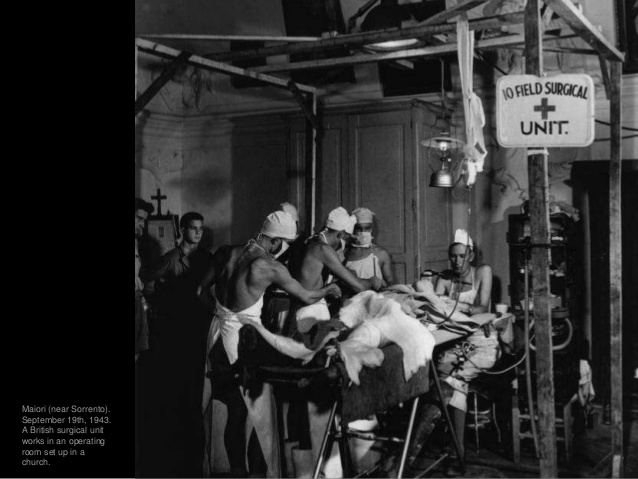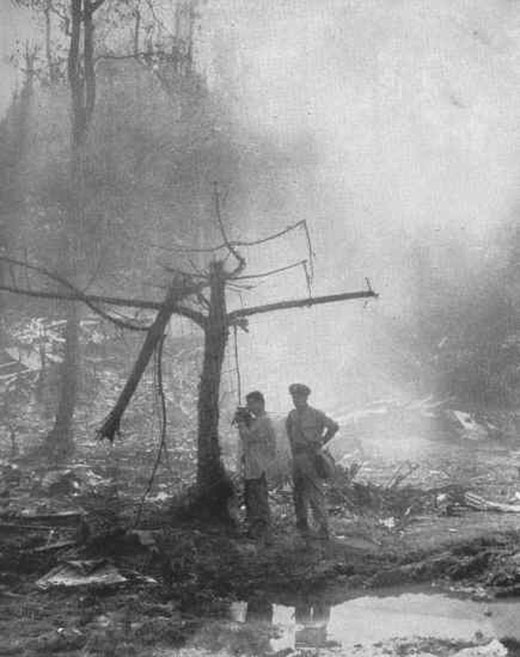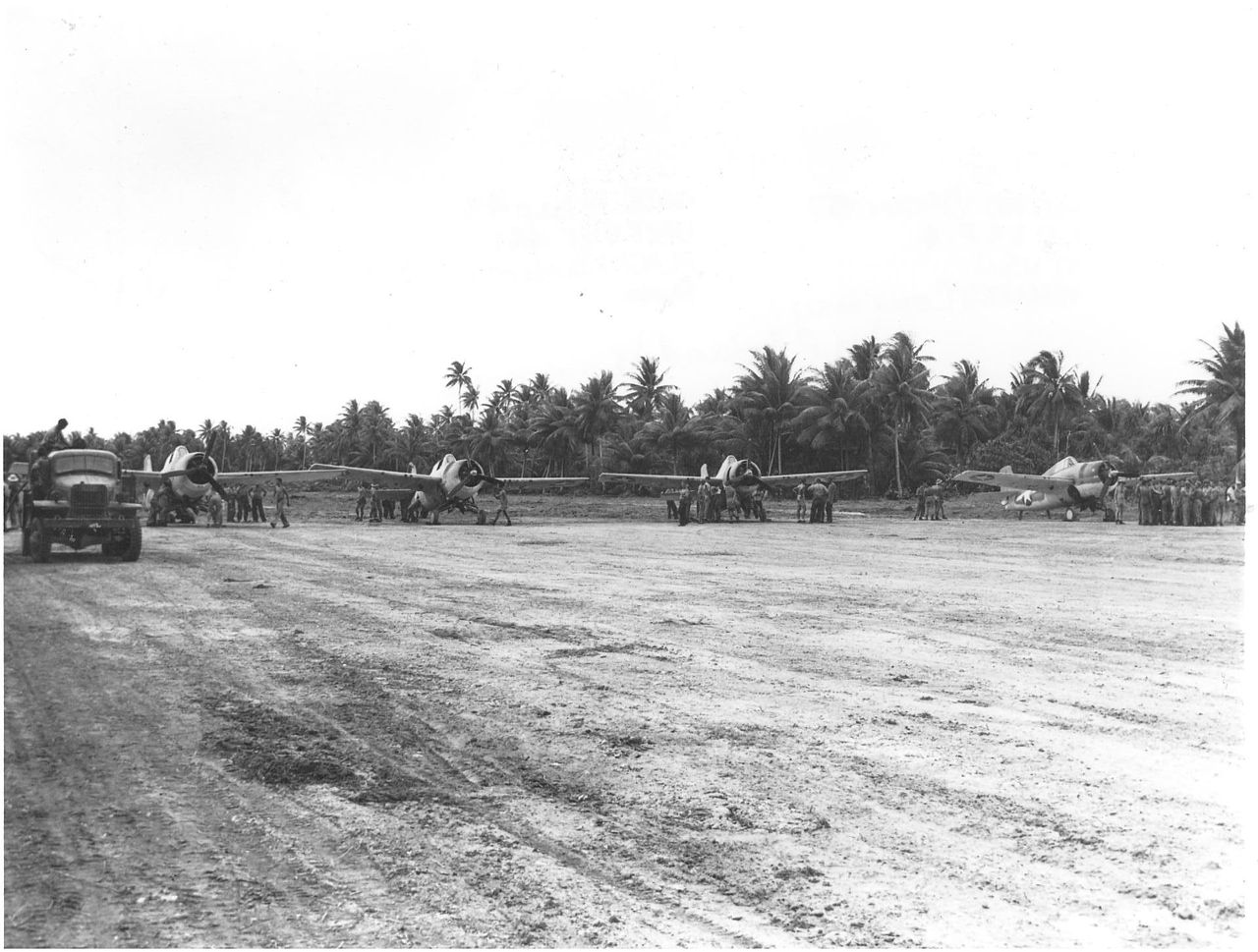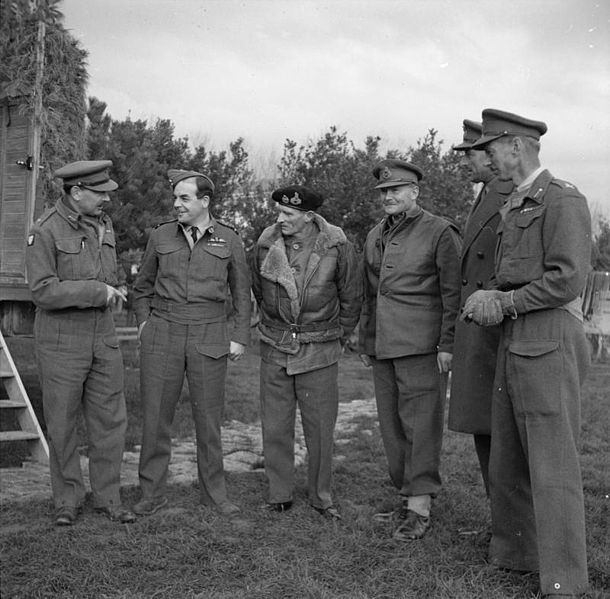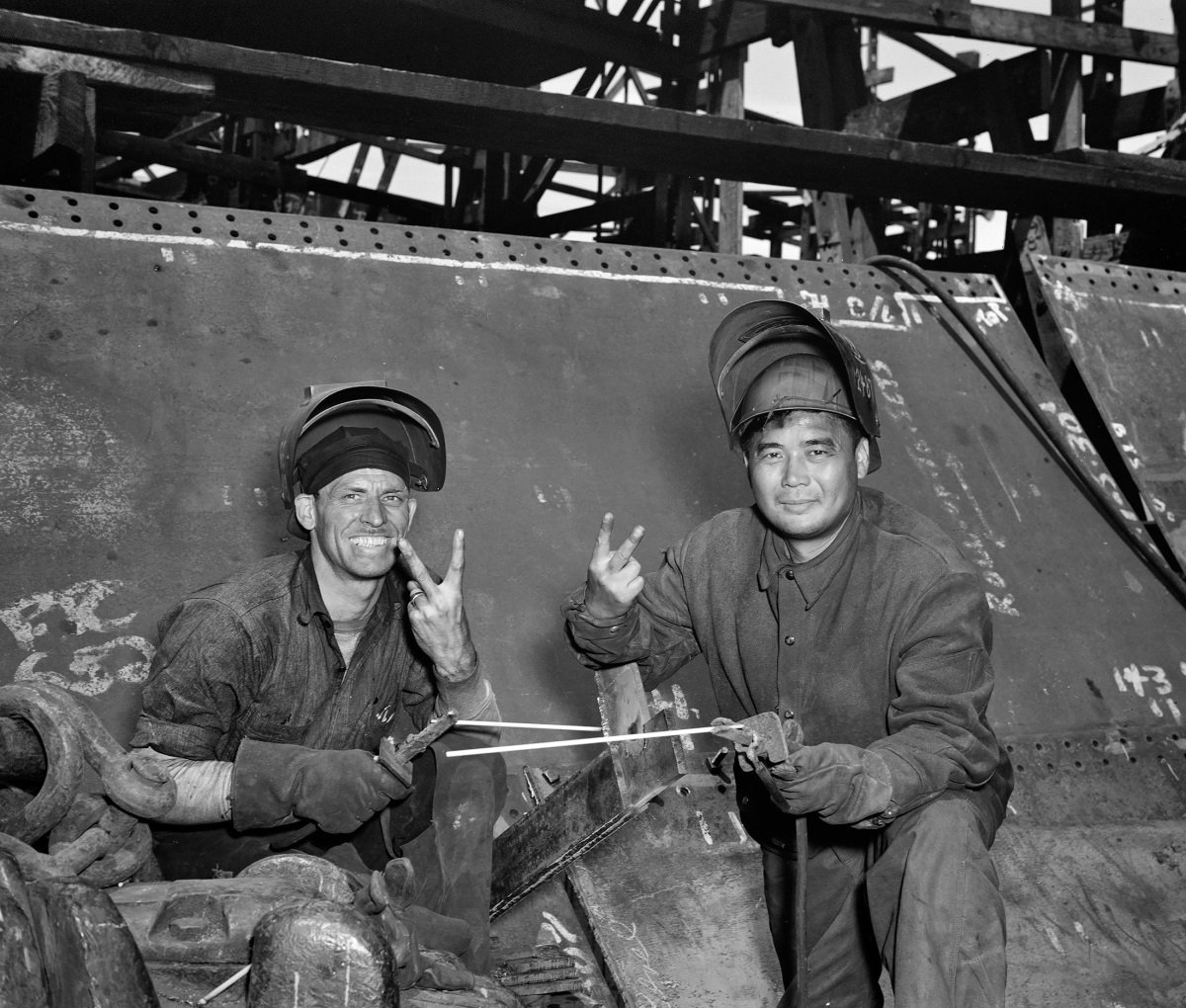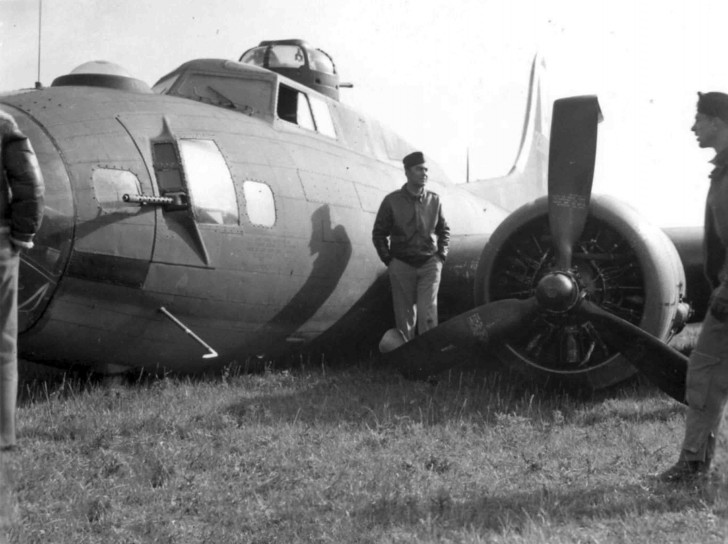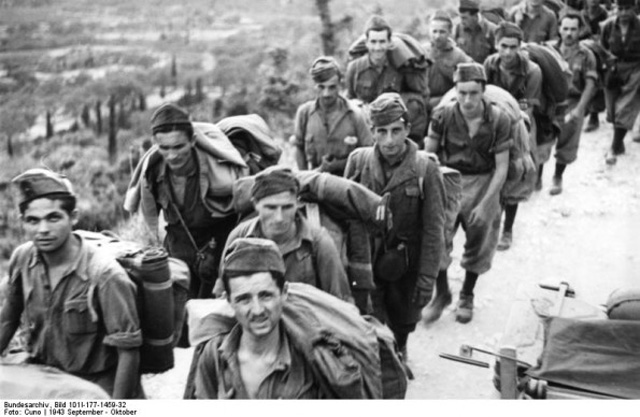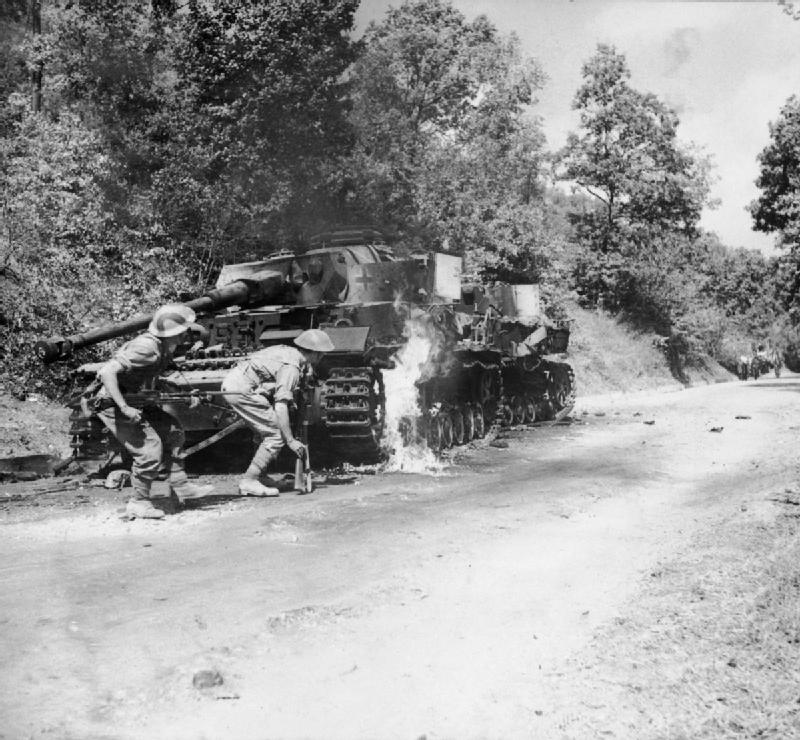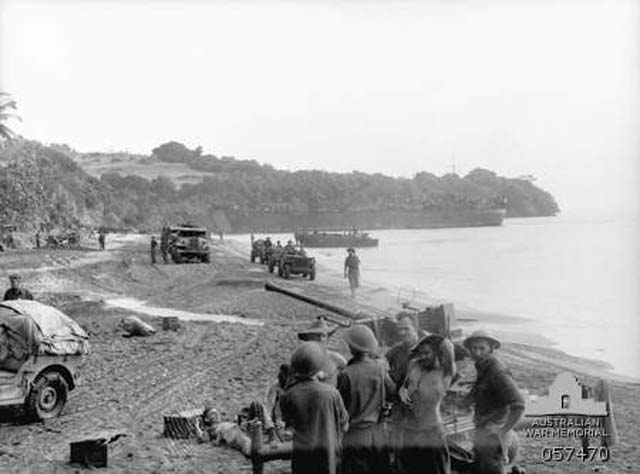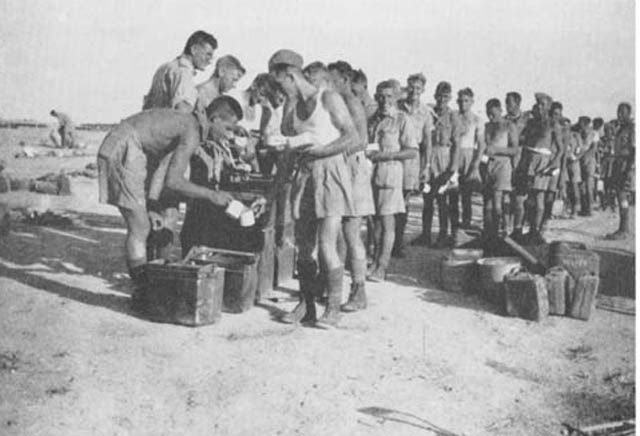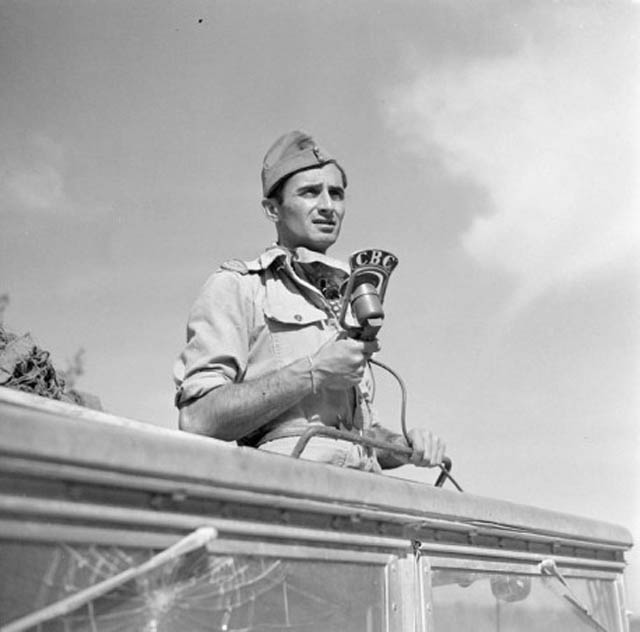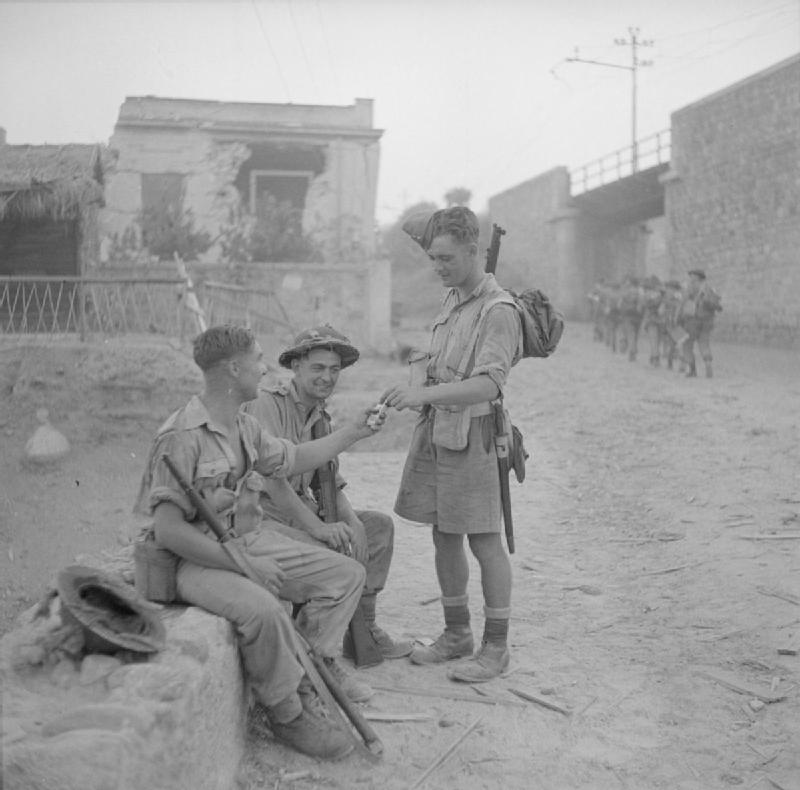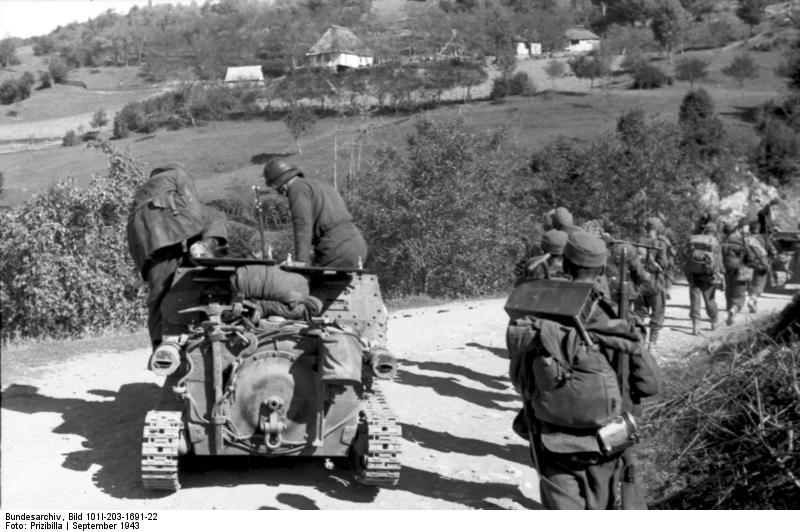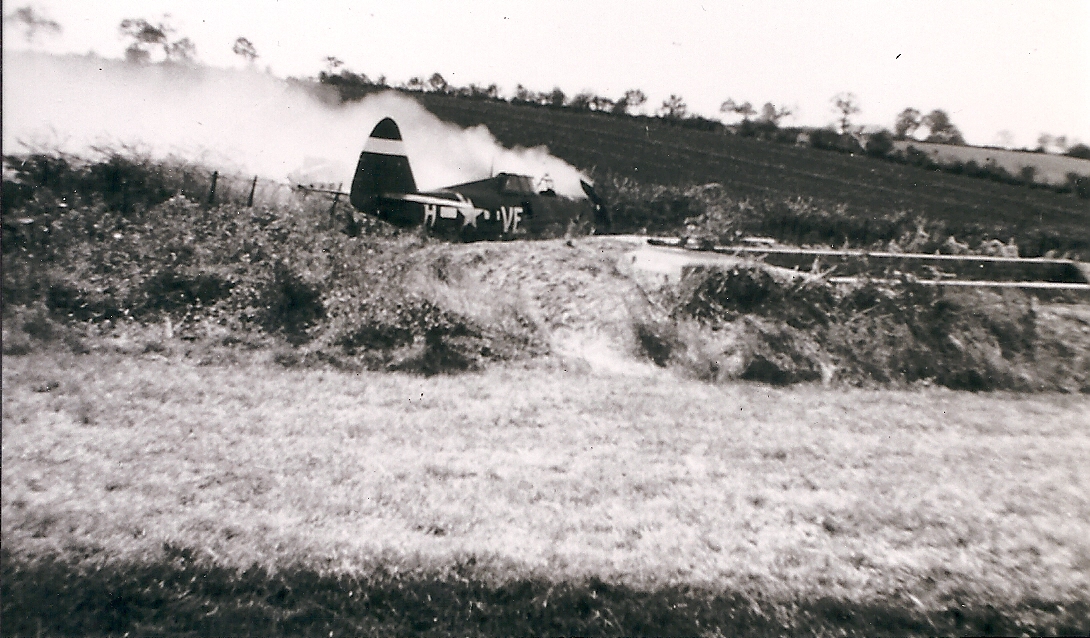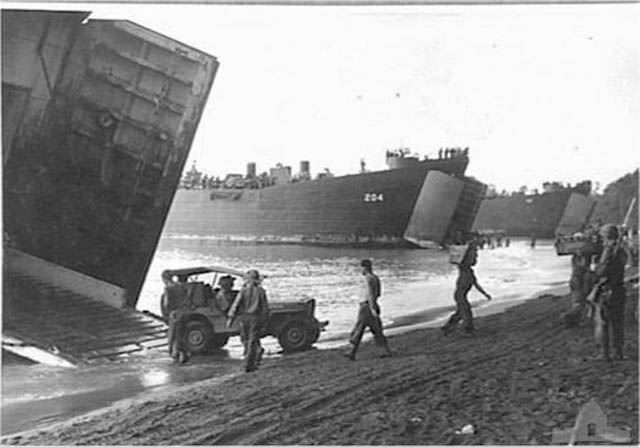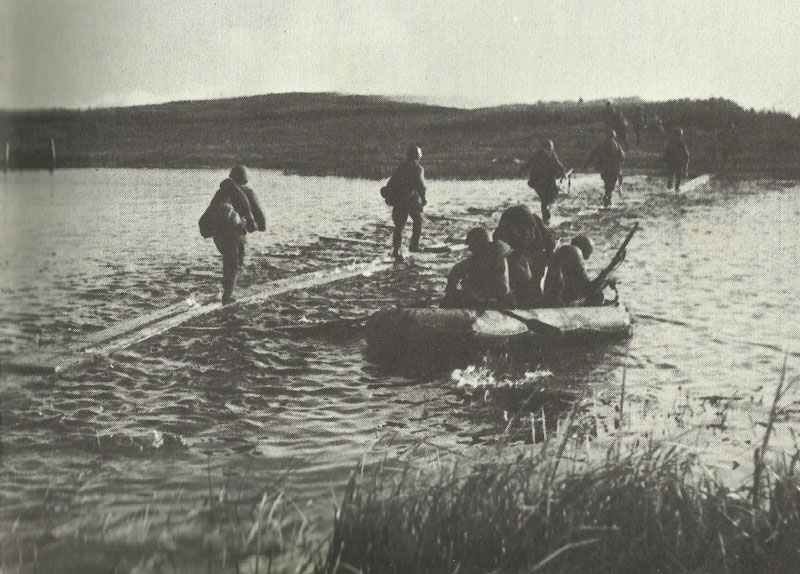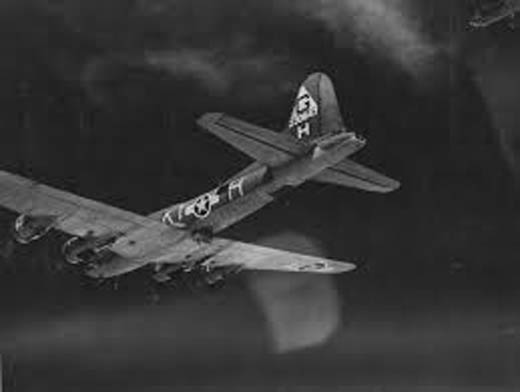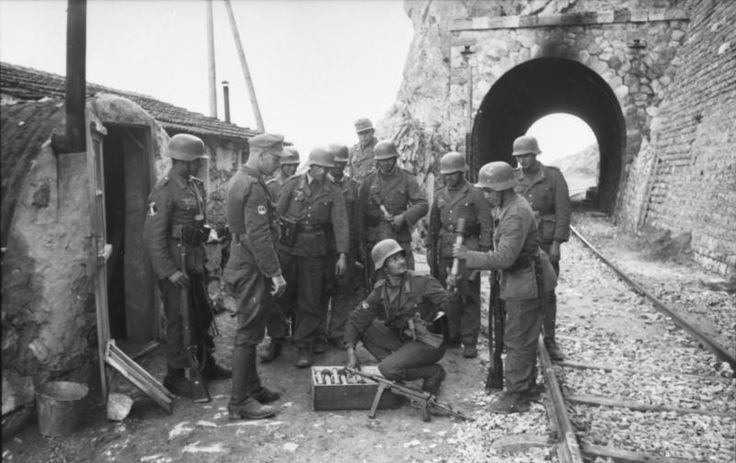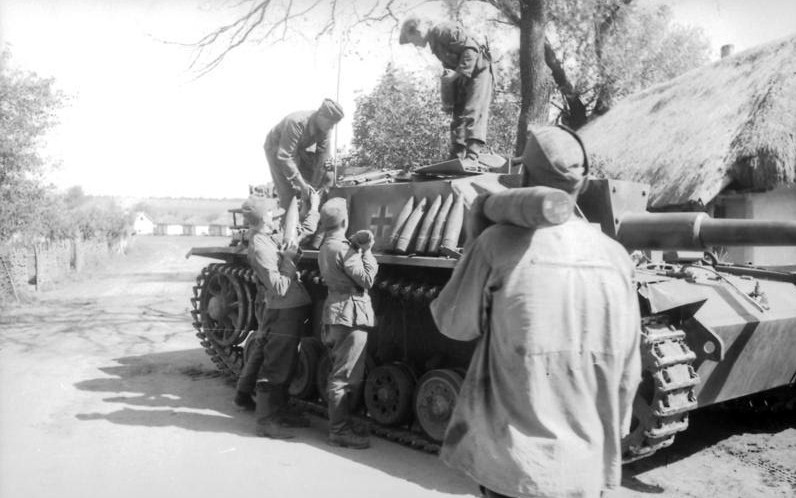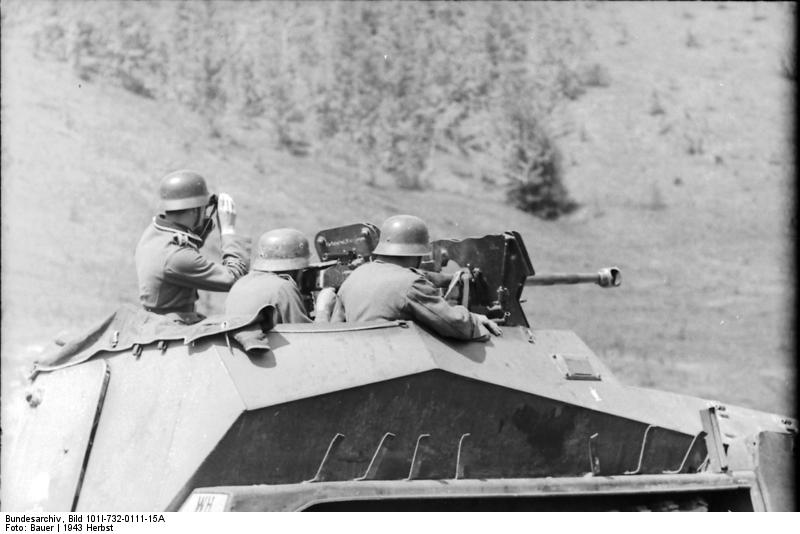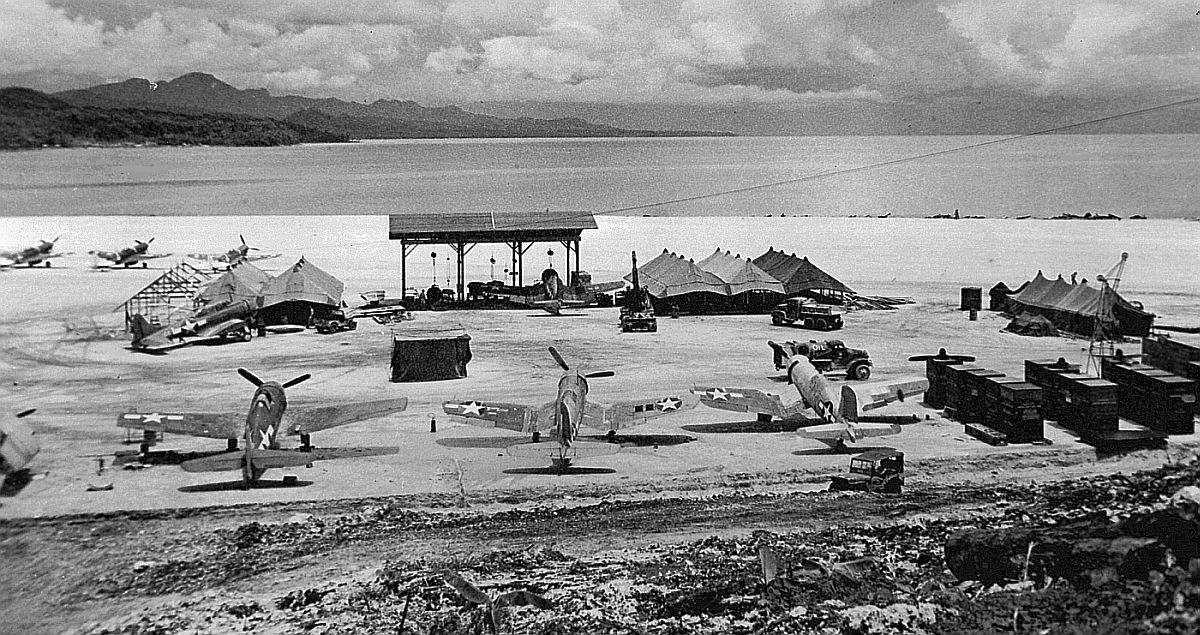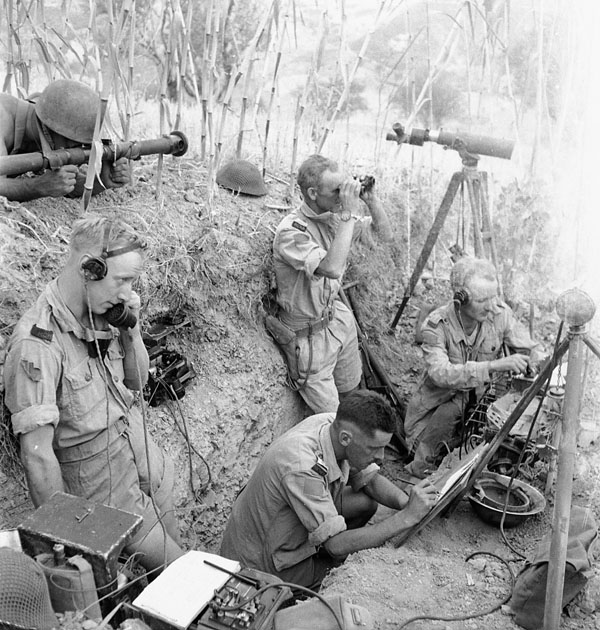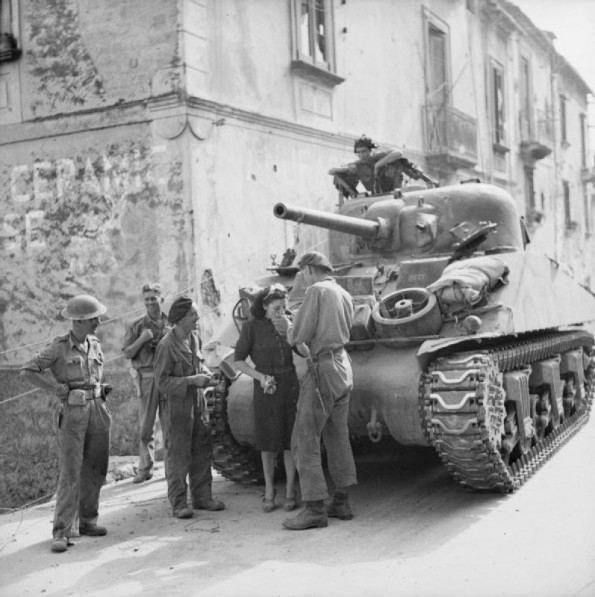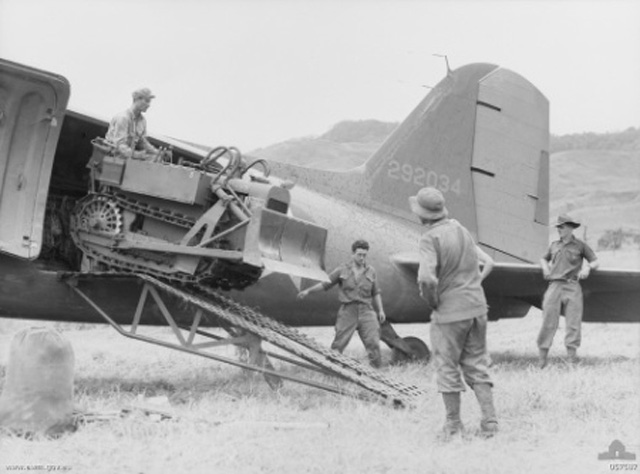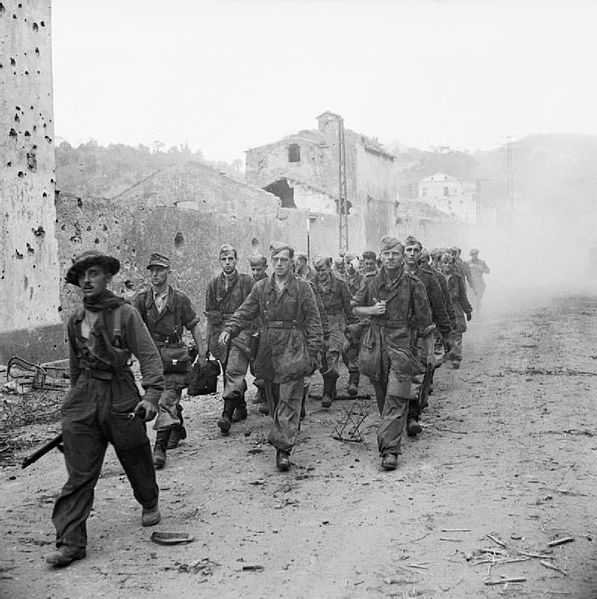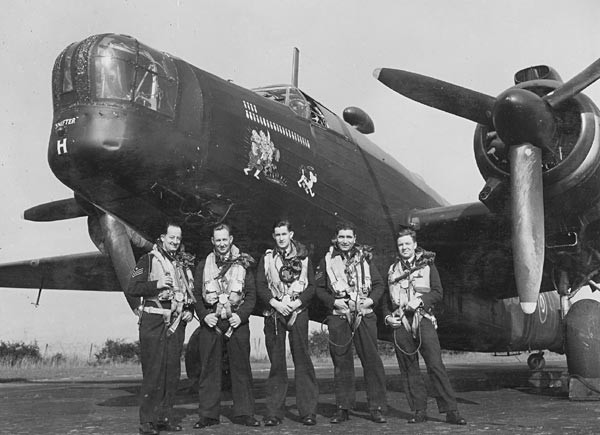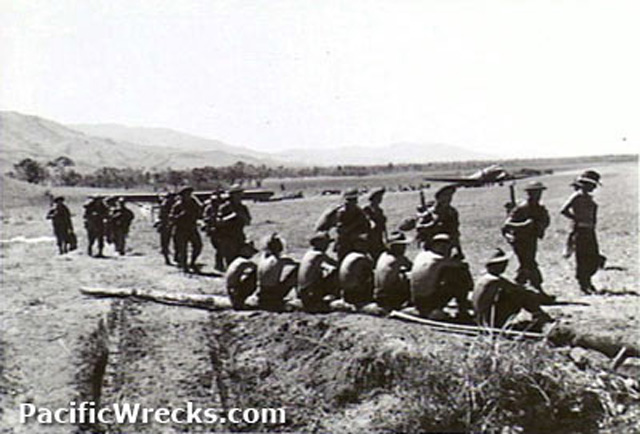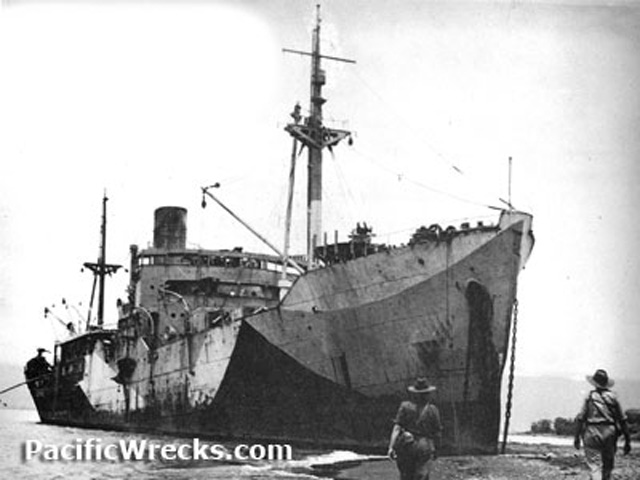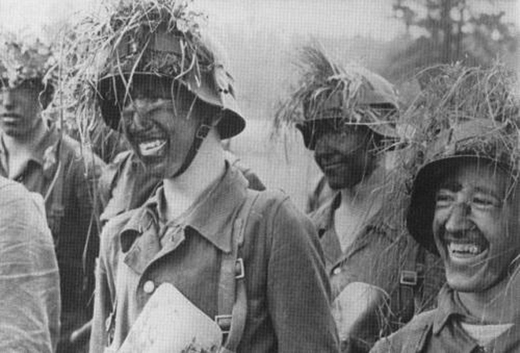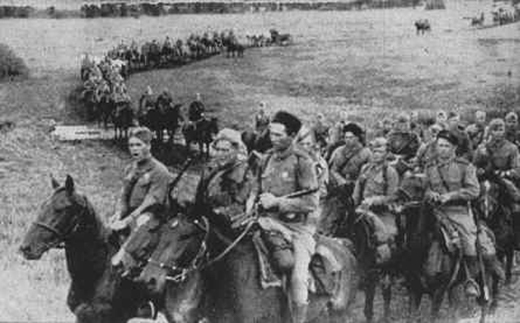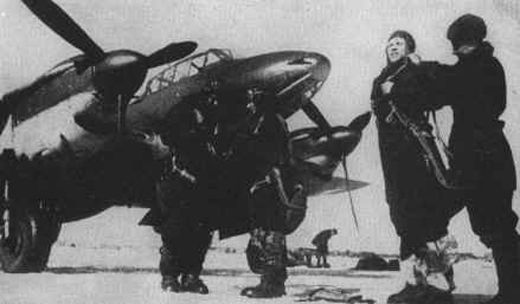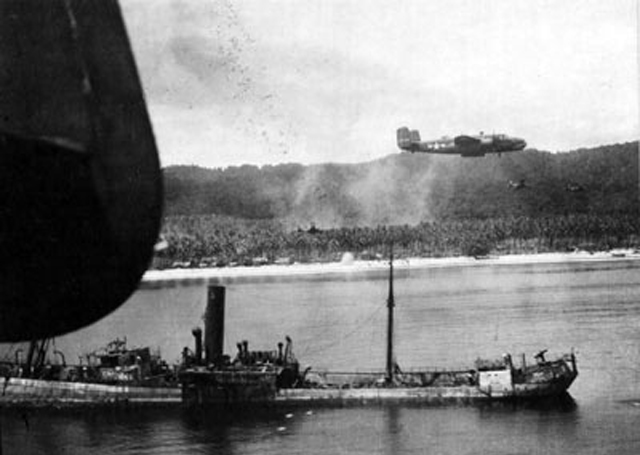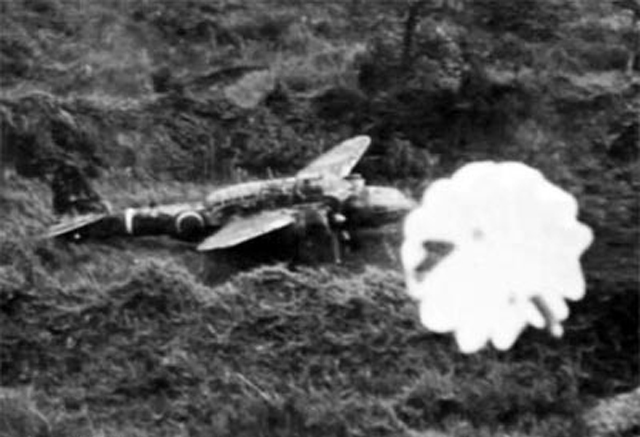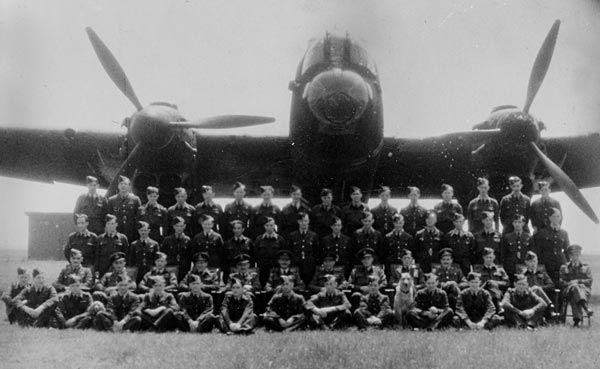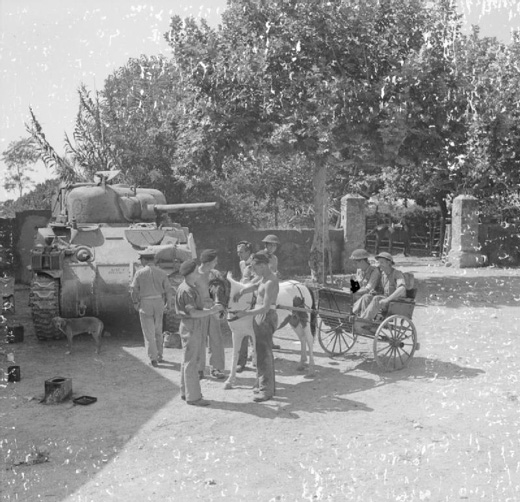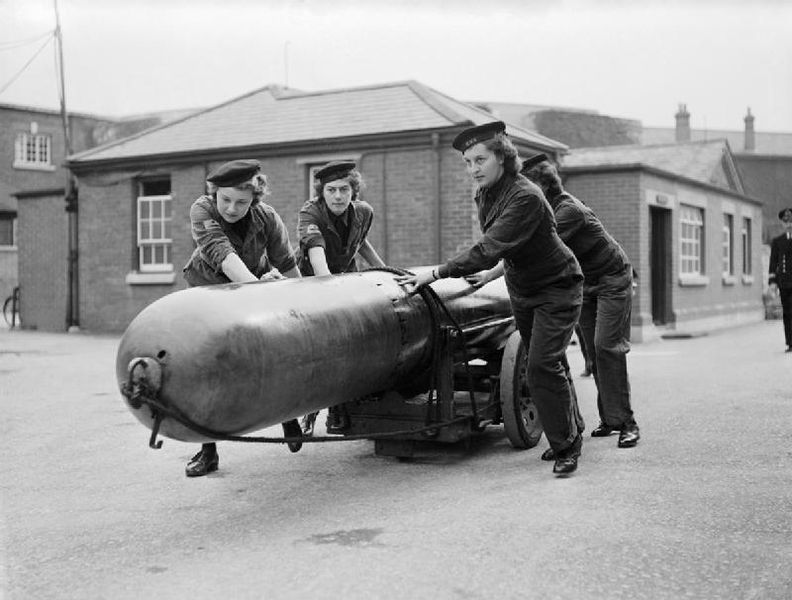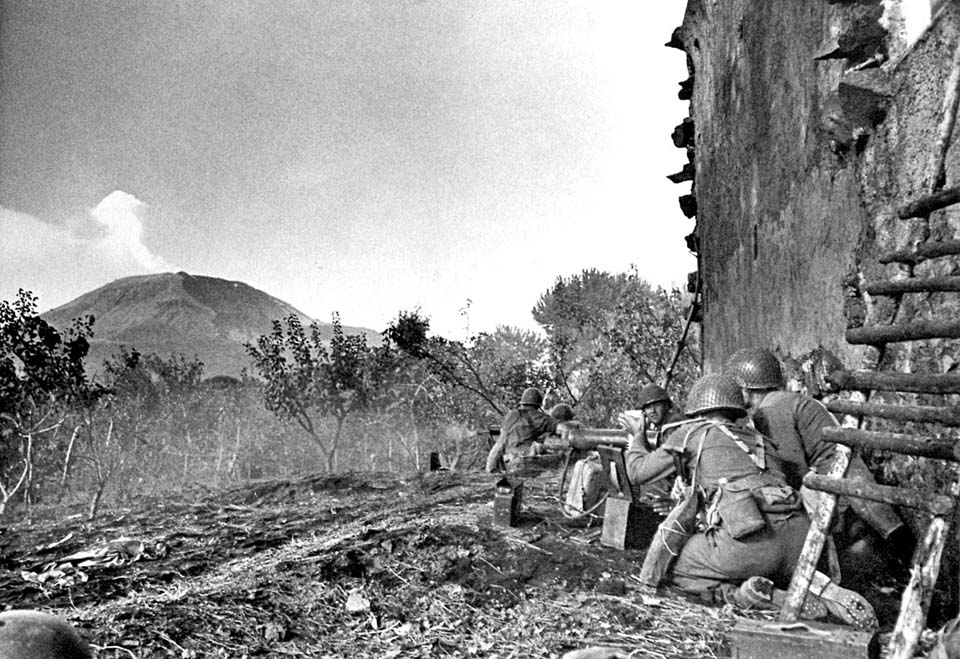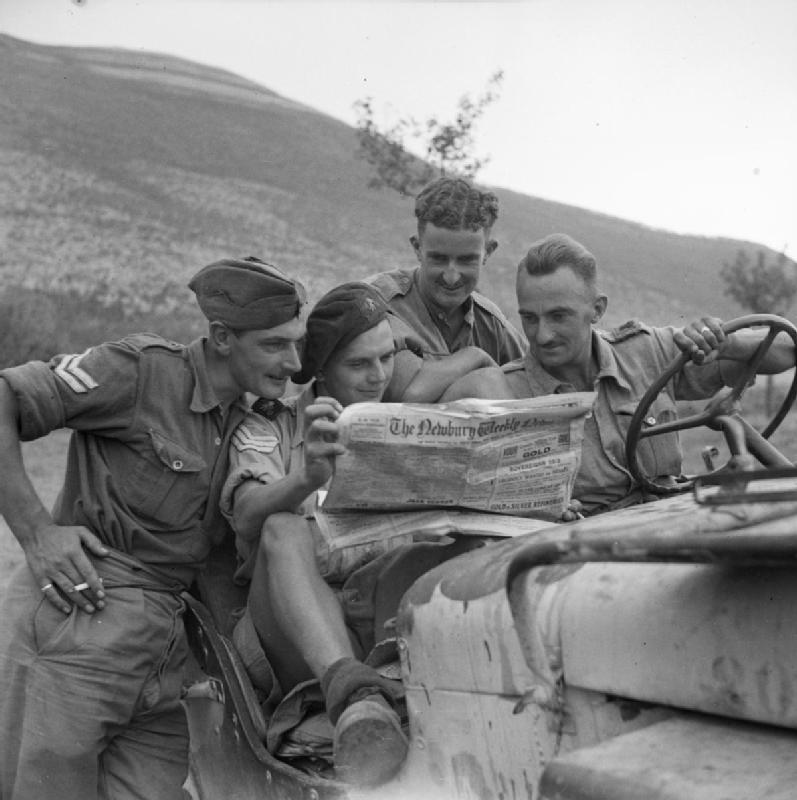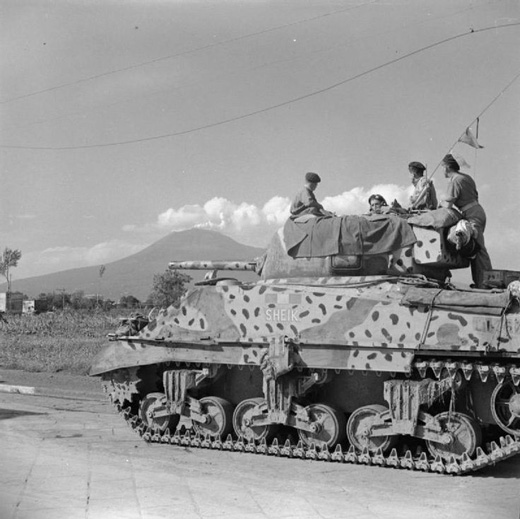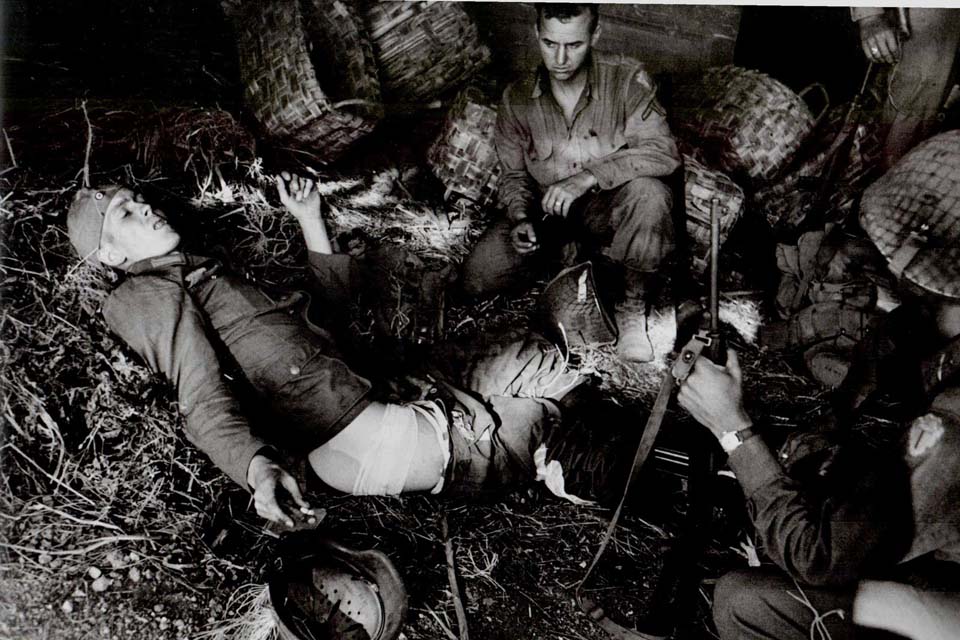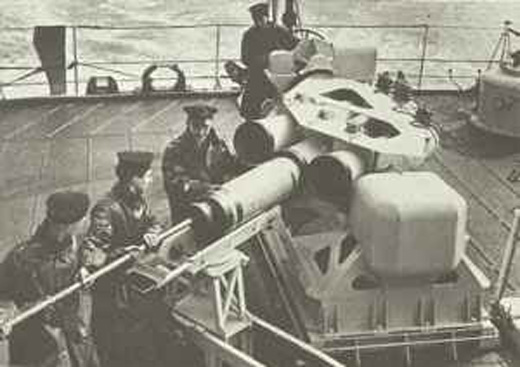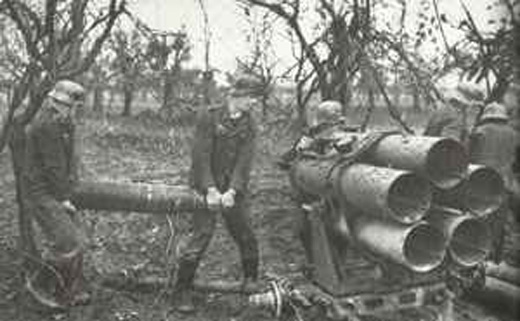Air Operations, Algeria
NAAF (Northwest African Air Forces) formally relinquishes administrative contorl of all subordinated units to appropriated subordinate headquarters: NAAF headquarters to 12th Air Force headquarters; NASAF (Northwest African Strategic Air Force) aircraft to XII Bomber Command; NACAF (Northwest African Coastal Air Force) aircraft to XII Fighter Command; etc. 12th Air Force is still operationally subordinate to NAAF, and Lt-Gen Carl Spatz remains commanding general of both organizations. Also, NATAF (Northwest African Tactical Air Force) command overseeing the XII Air Support Command (31st and 33rd Fighter Groups, in Spitfires and P-40s, respectively; 27th and 86th Fighter-Bomber Groups, in A-36s; and 111th Tactical Reconnaissance Squadron), NATBF (47th Light Bomb Group, in A-20s), and the RAF's Western Desert Air Force.
[Air Operations, Bismarcks
- 12 V Bomber Command B-25s attack Iboki Plantation and Rein Bay.
- 5 22nd Medium Bomb Group B-26s attack the Cape Gloucester area. 12 RAAF Beaufighters also take part in the attack.
Air Operations, CBI
BURMA- 7th Heavy Bomb Group B-24s attack rail facilities at Mandalay.
- 7 11th Medium Bomb Squadron B-25s and 8 23rd Fighter Group P-40s attack a Japanese destroyer and the dock area at Shihhweiyao. 1 P-40 and 3 449th Fighter Squadron P-38s attack a barracks at Yangsin, shipping at Wuchang and Kutang, and a train and antiaircraft emplacements near Puchi. 6 P-40s sink a small river tanker near Ichang and strafe Japanese Army cavalry troops at Ocheng. 3 P-40s attack the airfield at Swatow and the port area.
Air Operations, Central Pacific
Construction and defense troops are landed at Baker Island to begin work on a new advance airfield from which the projected invasion of the Gilbert Islands can be supported.
[Air Operations, East Indies
V Bomber Command B-24s and B-25s attack targets in the Lesser Sunda Islands.
[Britain, Home Front
W. W. Jacobs, writer of macabre short stories, dies at age 79.
[Central Pacific
US forces land on Baker Island, east of the Gilberts and a little north of the Equator, and within a week have prepared an airstrip to support their coming campaign in the Gilbert Islands. The Americans now have 5 bases in the Central Pacific from which their bombers can reach the Gilberts: Funafuti, Nanomea and Nukufetau in the Ellice Islands, Canton Island and now Baker Island.
Aircraft taking off from a US aircraft carrier bomb Marcus Island, 1,185 miles southeast of Tokyo, causing severe damage to 85 percent of the Japanese military installations, including two airstrips severely damaged and 7 Japanese aircraft destroyed on the ground. US losses total 2 fighters and 1 torpedo-bomber. The F6F Hellcat fighter is used in combat for the first time in this action.
[Air Operations, Europe
The Calabrian coast of Italy is bombed by ships and planes in a pre-invasion attack.
RAF BOMBER COMMANDEvening Ops:
- 30 OTU Wellingtons with 6 Mosquitos and 5 Lancasters of the Pathfinders successfully bomb an ammunition dump in the ForÍt de Mormal. 8 Mosquitos are sent to Cologne and Duisburg, 89 aircraft lay mines in the Frisians, near Texel and off the Biscay and Brittany ports.
- 1 mine-laying Stirling is lost.
ITALY:
- A-20s and B-25s under NATAF control attack several towns, a bridge, a lighthouse, and a radar station in southern Italy.
- 12th Air Force P-40s attack a zinc plant and strafe a factory.
Air Operations, New Guinea
In the 5 Air Forceís largest attack to date, 20 V Bomber Command B-24s and more than 40 B-25s drop more than 200 tons of bombs on dumps in the Alexishafen-Madang area. Also, 17 43rd Heavy Bomb Group B-17s attack Labu and V Bomber Command B-25s attack barges on the Bubui River.
[Diplomatic Relations
The Italian government dispatches a telegram to Allied Headquarters implicitly accepting the armistice: 'The answer is affirmative repeat affirmative. Known person will arrive Thursday morning 2 September time and place arranged. Stop Please confirm.'
[Eastern Front
The Soviet 5th Army of the West Front captures Dorogobuzh, midway between Smolensk and Vyazma. They also make progress in the south around Taganrog.
The Germans had been thrown irrevocably onto the defensive following Kursk. Retreating toward the Dniepr, the Ostheer expected to find a system of prepared fortifications. However, Hitler had forbidden the construction of defenses to the rear ans so the retreat to the Dniepr line turned into a race against annihilation. For the Red Army the race to the Dniepr begans a pursuit of the enemy that would last until the fall of Berlin in 1945.[
Germany, Command
Oberstleutnant Dr Ernst Kupfer, Stuka 'ace', is appointed first General der Schlachtflieger, in command of all Stuka and ground attack units.
[New Guinea
The air offensive in advance of the attack on Lae is stepped up. Allied aircraft concentrate their attacks on Japanese stores, airfields and transports in New Guinea and New Britain.
[Occupied Soviet Union
In a second campaign by Russian partisans against German rail communications, 193 groups destroy 32,000 rails from Crimea to Karelia. The campaign ends November 1.
[Pacific
- The US destroyer Wadsworth (DD-516) sinks hte Japanese submarine I-182 off Epiritu Santo, New Hebrides.
- The US submarine Pompano (SS-181) sinks the Japanese merchant vessel Nankai Maru off Miyako, Japan.
Solomons
In preparation for the offensive against the northern Solomons, Air Command North Solomons is formed at Espiritu Santo under Brig-Gen Field Harris, USMC.
On Vella Lavella, the forward elements of the 1st Battalion, 35th Infantry, 25th Division, driving on Kokolope Bay, reach the Orete Cove area, some 14 miles northeast of the Barakoma beachhead.
[United States, Planning
The JCS allocates the 4th Marine Division and the 7th Infantry Division as ground forces for Nimitz's planned offensive in the Marshall Islands. The objectives of the offensive are initially designated as Wake, Eniwetok, and Kusaie.
The War Department begins recruiting for a specialized force of 3,000 American combat troops for operations in Burma.
[